12 MORE PAGES, SAME GREAT PRICE!
IT’S A FOAM PARTY
Could this be the first ever captive breeding of Japanese flying frogs in the UK?


Find out more!
YEMEN CHAMELEON HEALTH


Are Yemen chameleons suitable for beginners? Dr Michaela Betts unveils some of the primary veterinary concerns around the species.
look at some lesser-known examples.
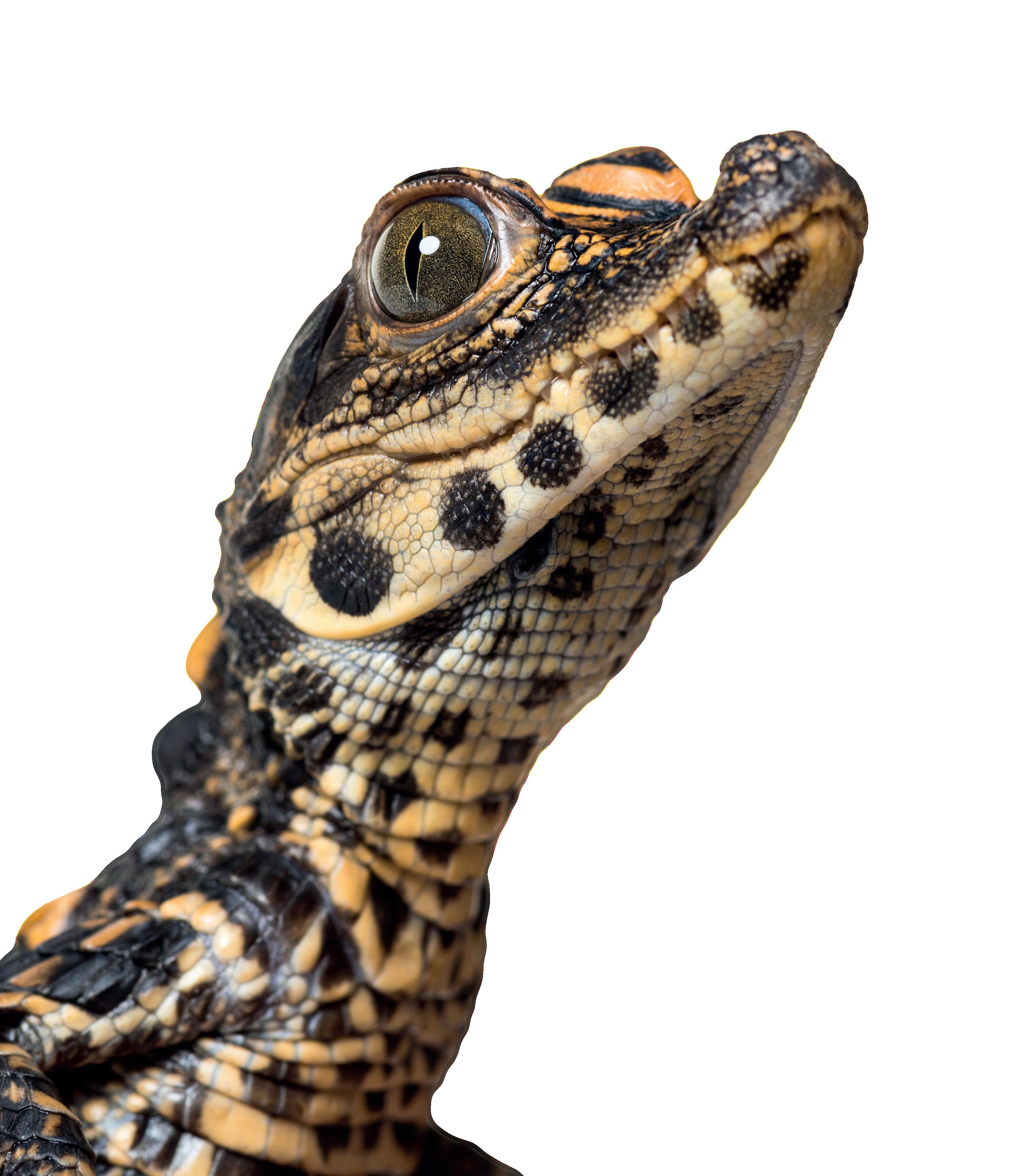

EDITORIAL ENQUIRIES
hello@exoticskeeper.com
SYNDICATION & PERMISSIONS
thomas@exoticskeeper.com
ADVERTISING
advertising@exoticskeeper.com
About us

MAGAZINE PUBLISHED BY Peregrine Livefoods Ltd
Rolls Farm Barns
Hastingwood Road
Essex
CM5 0EN
Print ISSN: 2634-4705
Digital ISSN: 2634-4688
EDITORIAL:
Thomas Marriott

Dr Michaela Betts
DESIGN:
Scott Giarnese
Amy Mather
Subscriptions
This month welcomes an additional page increase, making this issue the longest magazine we have published. At Exotics Keeper Magazine, we don’t want to cycle old material under the guise of something new, but we are keen to cover topics we’ve already covered. By adding another 12 pages and a whole new feature, without increasing the price of the magazine, we hope to provide even more value to your subscription. From crocodiles to chameleons, this issue has something for everyone!
Our survey initiative has now ended. We have gathered lots of extremely important information and are now working hard to write and publish those findings. I will be producing an easily digestible feature in an upcoming issue of EK, but we will also send this data for peer-review and publication in an academic journal too. By participating in our survey, you have helped create the biggest dataset of “kept-species” that the hobby has ever seen.
Next, it’s time to improve this magazine. If you are enjoying a free subscription, please consider subscribing to the printed version. Not only does the glossy magazine look beautiful and offers something easy to flick through, but your financial contribution makes growth happen.
In other news, I’d like to give a friendly reminder that now is a good time to scrutinise your animals’ life support systems. All electrical items will succumb to aging over time and summer does an excellent job of masking this. Putting off essential maintenance such as replacing a bulb or investing in a new thermostat until the Christmas period when, let’s face it, we’re all skint, may compromise the wellbeing of your animals. Please, check your expiry dates, borrow a solarmeter and run some tests to ensure your animals are prepared for winter.
Thank you.
Front cover: African dwarf crocodile (Osteolaemus tetraspis)

Right: Yemen chameleon (Chamaeleo calyptratus)

US
CONTACT
. . . . . . . . . . . . . . . . . . . . . . . . .
. . . . . . . . . . . . . . . . . . . . . . . . .
Follow us
Every effort is made to ensure the material published in EK Magazine is reliable and accurate. However, the publisher can accept no responsibility for the claims made by advertisers, manufacturers or contributors. Readers are advised to check any claims themselves before acting on this advice. Copyright belongs to the publishers and no part of the magazine can be reproduced without written permission.





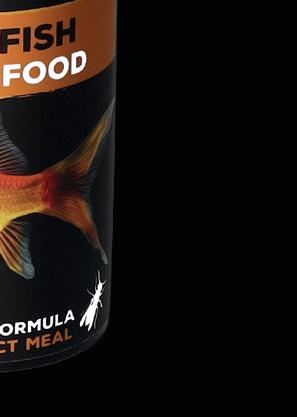





















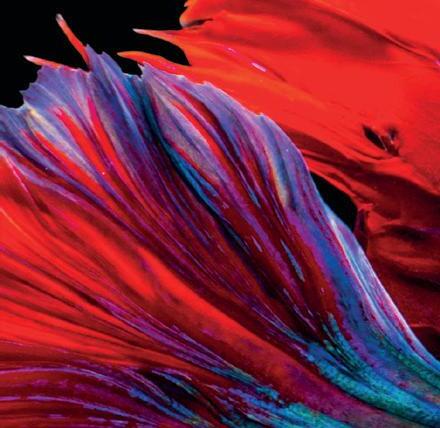
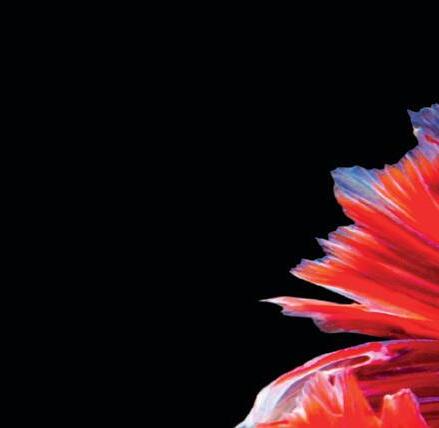

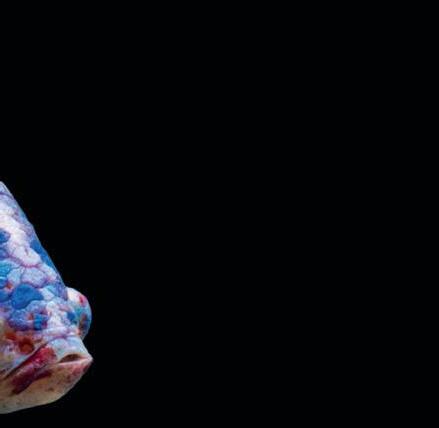
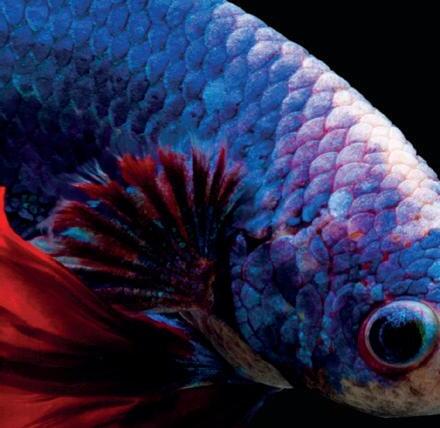




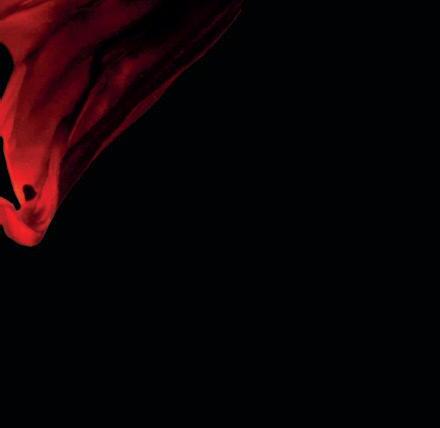

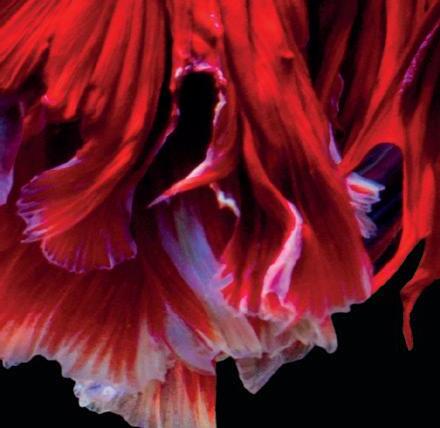




02 06 24 02 EXOTICS NEWS The latest from the world of exotic pet keeping.


06 BACK FROM THE DEAD: REVISITED More introductions from the Lazarus taxon.
16
32 42 51
FLASHBACK FEATURE: A FIELD OF OPPORTUNITY Going back to nature with corn snakes.
24
14 SPECIES SPOTLIGHT Focus on the wonderful world of exotic pets. This month it’s the Antilles pink toe tarantula (Caribena versicolor).
IT'S A FOAM PARTY Breeding Japanese flying frogs.
32UNVEILING HEALTH CONCERNS IN CHAMELEONS

By Dr Michaela Betts
42A SHORT AND SNAPPY HEADLINE Breeding dwarf crocodiles in captivity.
51 KEEPER BASICS: Next-Level Keeping.
58
FASCINATING FACT Did you know...?
EXOTICS NEWS

The latest from the world of exotic animals

Victorian grassland earless dragons reach around 15cm in length and have no visible external ears. They reach maturity in the same year they are born and can reproduce in this same time period. Studies indicate that the lizards may only reproduce once in their entire lifetime, making each individual vital to the survival of the species.
Extinct Victorian grassland earless dragon rediscovered

Since the 1960s, the Victorian grassland earless dragon (Tympanocryptis pinguicolla) was thought to be extinct, with the loss of habitat from farming and agricultural development in west Melbourne, Australia contributing to their decline. The species has now been rediscovered in the state of Victoria, with the local government funding a conservation project that uses wildlife detection teams to sniff out further populations of the newly-found lizard.
Their findings will give researchers the data needed to determine what efforts are required to protect the critically endangered dragons. As part of this effort, Melbourne Zoo has initiated a breeding programme to increase wild population numbers.

In a government statement, Commonwealth Minister for the Environment and Water, Tanya Plibersek, said: “I want to protect our precious creatures for our kids and grandkids. It’s such exciting news that the Victorian grassland earless dragon has been rediscovered.
It’s a reminder about why it’s so important to invest in habitat restoration and the eradication of feral species like cats and foxes.”
Climate disaster?
Researchers from 19 countries around the world have collaborated on a study that has found more than 800 reptile and amphibian species are at risk of extinction over the next 100 years, due to the effects of climate change.
Data from 14,000 herp species was collected and how certain species were affected by the impact of climate change on their protected environments was analysed. The study focused on the animals’ behaviours and population numbers.
The study, ‘Global Protected Areas as refuges for amphibians and reptiles under climate change’, was published in the Nature Communications journal and focused on the potential for protected environments to act as havens for herp species from the potentially devastating effects of climate change.
The findings showed that reptiles and amphibians in protected areas have better chances of thriving than those outside protected areas, with fewer extinctions likely, however they will

Which pet is the loudest?
nonetheless experience some negative impact from climate change.
The study states: “Our models predict that 359 to 770 amphibian species and 545 to 1,098 reptile species will go extinct under different climate change scenarios over the course of the ongoing century.
“At the same time, it is important to remember that despite the relative optimism emerging from the new research, the models still predict extremely high rates of loss of species and habitats due to climate change. Protected Areas do indeed protect the animals living within them, but nothing is foolproof.”
Paignton Zoo celebrates 100 years

This year, Paignton Zoo is celebrating its centenary, marking 100 years since the opening of its gates to the public.
In 1923, millionaire Herbert Whitley, opened Torbay Zoological gardens on his Devon estate, an attraction developed from his personal collection of animals and founded on his belief that zoos should be places of education as well as recreation.
Upon Whitley’s death in 1955, the Whitley Wildlife Conservation Trust was founded. After undergoing many name changes, the site eventually became Paignton Zoo Environmental Park in 1996. The organisation underwent a
2 SEPTEMBER 2023 Exotics News
©Melbourne Zoo
10-year transformation to become a modern facility that reflected Whitley’s early philosophies on conservation, education and research.
The Whitley Wildlife Conservation Trust is now the Wild Planet Trust which runs both Paignton Zoo and Newquay Zoo, bringing the Trust’s mission of protecting at-risk plants and animals from biodiversity loss to the forefront of the zoos’ operations.
Paignton Zoo is running a number of events and programmes to celebrate a century of dedication to ensuring the preservation of beloved species and habitats far beyond Devon, with their impact reaching around the world and continuing to make a valuable contribution to global conservation efforts.
Proposal made to add dunes sagebrush lizard to endangered species list
In the latest developments in a debate spanning four decades, the US Fish and Wildlife Service’s (USFWS) latest proposal to list the dunes sagebrush lizard (Sceloporus arenicolus) as an endangered species has met with opposition from Republican Congressman August Pfluger.
The representative for the 11th district of Texas has filed a bill intended to limit the ability of the USFWS to successfully secure a listing for the embattled species. The “Limiting Incredulous Zealots Against Restricting Drilling” (LIZARD) Act aims to preserve widespread oil drilling in the area where the lizard is found.
The small brown dunes sagebrush lizard lives in southeastern New Mexico and west Texas, exclusively inhabiting small areas of shinnery oak duneland.

The proposal to add the lizard to the list was previously withdrawn by the USFWS in 2012, following agreements made by oil companies and ranchers in the area to contribute to efforts to conserve the species’ habitat. The addition of the dunes sagebrush lizard to the list of endangered species would significantly impact the ability of corporations to use the surrounding land for business ventures, making permits necessary to develop the land.
While the USFWS previously deemed the conservation agreements to be sufficient grounds to avoid listing the species, the organisation has now stated the degradation
of nearly half lizard’s only existing habitat as grounds for its listing, casting doubt on the feasibility of the prior previous agreements. The likely continuing fragmentation of the habitat by oil and natural gas extraction and sand mining is also specified, as well as the ongoing negative impact of existing development, as factors that make the species valid for listing.
If successful, the LIZARD act would stop federal ability to protect the species and others by listing them as endangered.
In a statement, Pfluger alleges political rather than ecological motives for the listing, saying: “On the campaign trail, President Biden promised to kill the fossil fuel industry… His latest tactic – listing the dunes sagebrush lizard as an endangered species so he can shut down drilling in the Permian – is just the latest in a sting of assaults on the Permian Basin and our way of life. The President wants to control private property in Texas. Not on my watch. My legislation protects energy security and jobs in the Permian by nullifying his latest attack.”
Ladder snake found in head of broccoli bought from Birmingham Aldi
Birmingham resident Neville Linton received a shock after noticing something unusual in an item from his weekly shop.
After opening a bag of broccoli and noticing something moving inside, he enlisted the help of his sister, AnneMarie Tenkanemin, to identify the intruder.
“It was pretty frightening. I’m not good with snakes. It’s lucky I didn’t just leave the broccoli out in the kitchen or it would have been loose in the house,” said Neville, 63.

Snake-phobic Neville and his sister placed the snake in a tub and drove it back to the shop where he bought the broccoli, surprising the staff with its contents. From there, it was taken to nearby Dudley Zoo and identified as a young non-venomous ladder snake, a species typically found in Portugal, southern France and parts of Italy.
An Aldi spokesman said: "Our supplier has never had a complaint of this nature and has robust processes in place to prevent such issues occurring. We are investigating this isolated incident and have apologised to Mr Linton that our usual high standards were not met."
3 SEPTEMBER 2023 Exotics News
Prefer to get a quote than a joke? Visit britishpetinsurance.co.uk A trum-pet!
Researchers make crucial discoveries about reproductive habits of endangered frog
Researchers in Argentina have made significant strides in learning more about the elusive Santa Fe frog and how it reproduces.
The species is under threat from habitat loss in the Dry Chaco region as the forest is cut down for farmland. The tiny frog lives in caves, the team discovered, and only emerges to call for a mate.
In a world first, tadpoles of the species were also discovered on the expedition. The distinctive ‘leopardprint’ amphibian, Leptodactylus laticeps, is found in Argentina, Bolivia and Paraguay, but remains largely unknown about, despite being first described over a century ago.
ON THE WEB
The team dug for hours during the night, finally discovering tadpoles in the burrows where the species lays its eggs. The discovery was a major step towards understanding the frogs’ behaviours, and in turn protecting it from the threat of extinction.
Researchers are also working with local communities and farmers to share knowledge about the frog in efforts to safeguard it from further peril in an area that has seen one of the fastest deforestation rates in the world over recent years.
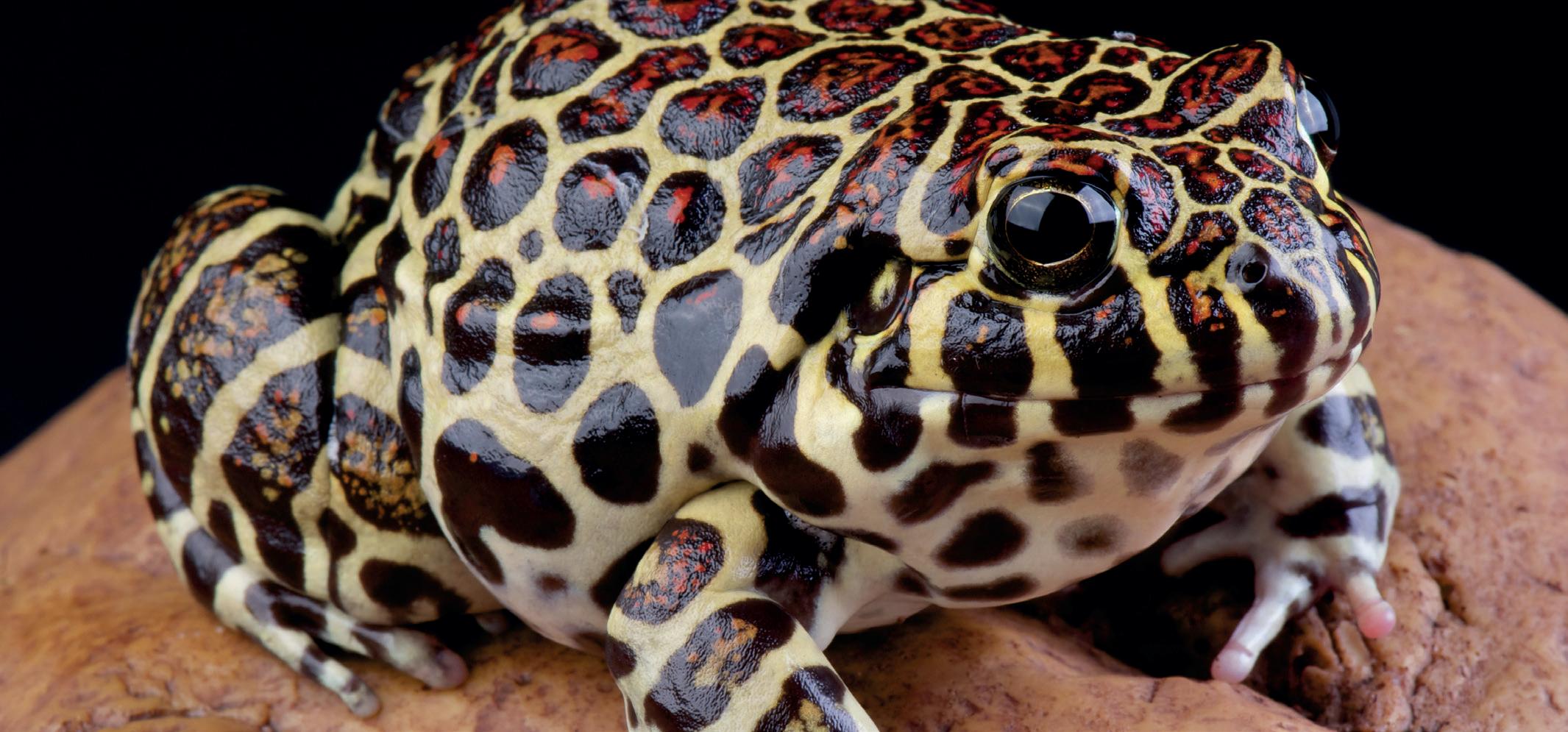
While the area is incredibly biodiverse, its extreme dryness and high temperatures make it inaccessible for humans and therefore a challenge for conservation teams looking to learn about its endangered inhabitants.
However, the latest developments in identifying the Santa Fe frog’s reproductive processes are a huge step forward in protecting the species against ongoing challenges.
Websites | Social media | Published research
Each month we highlight a favourite website or social media page
THIS MONTH IT’S: CROCODILES OF THE WORLD FOUNDATION
The Foundation is able to drive our commitment to advancing crocodilian conservation and promoting awareness of environmental issues affecting crocodiles. They aim to advance the wider education of the public in the world of crocodilians.
www.crocodilesoftheworld.co.uk/conservation/the-foundation/

4 SEPTEMBER 2023
Exotics News
Santa Fe Frog (Leptodactylus laticeps)

BACK FROM THE DEAD: REVISITED
More introductions from the Lazarus taxon.

6
Crested gecko (Correlophus ciliatus)

Since the dawn of time, plants and animals have had to face immeasurable obstacles to ensure the perpetuation of their species. Catastrophic changes from ice ages to human intervention have wiped out countless species throughout history. However, some animals, after being thought extinct for decades, even centuries can reappear as if rising from the grave. These species belong to the ‘Lazarus taxon’ and their natural histories are often tied with tales of mystery, resilience and discovery. A few years ago, we dived into some of the most famous cases of “missing” reptiles and amphibians, in this feature we look at some of the lesser-known cases.
Majorcan midwife toad
Alytes muletensis
Thought extinct for three years
The Majorcan midwife toad was originally described from fossil evidence back in 1977. For almost three years, the species was thought to be an extinct relict from a time long-gone. This all changed in 1979 when a tiny population of this Mediterranean toad was discovered in a small river in the Serra de Tramuntana region of Majorca. This species occupies limestone caverns and exhibits reasonably cryptic behaviours as it hides beneath rocks and stones in the stream. As with other midwife toads, males will carry the developing eggs on their lower backs for around 6 weeks throughout summer.
Alytes muletensis is currently an Endangered species, however, conservationists have seen great success in captive-breeding and reintroducing the species. In 1985, Durrell Wildlife Conservation Trust, with special permission from the Mallorcan Government, collected wild individuals to begin a captive-breeding project. Within a few years, the organisation had managed to successfully breed hundreds of toads and wild releases became an annual occurrence. Today, Mallorcan Midwife toads are held and bred at a number of other European institutions including; The Durrell Institute of Conservation and Ecology (DICE) at the University of Kent; Stuttgart Museum; The Open University; Barcelona Zoo; and Marineland (Palma de Mallorca).
8 SEPTEMBER 2023
Back from the Dead: Revisited
25% of the current wild population in Mallorca now originates from captive bred toads. The distribution of the toad has increased by 100% since the instigation of the recovery programme and twelve new breeding sites have been established since 1989 through re-introductions of captive bred toads, almost doubling the number of breeding sites occupied by the species. This has led to the species being uplifted from “Critically Endangered” to “Vulnerable” and then re-assessed to a status of “Endangered”.
Gray’s monitor
Varanus olivaceus
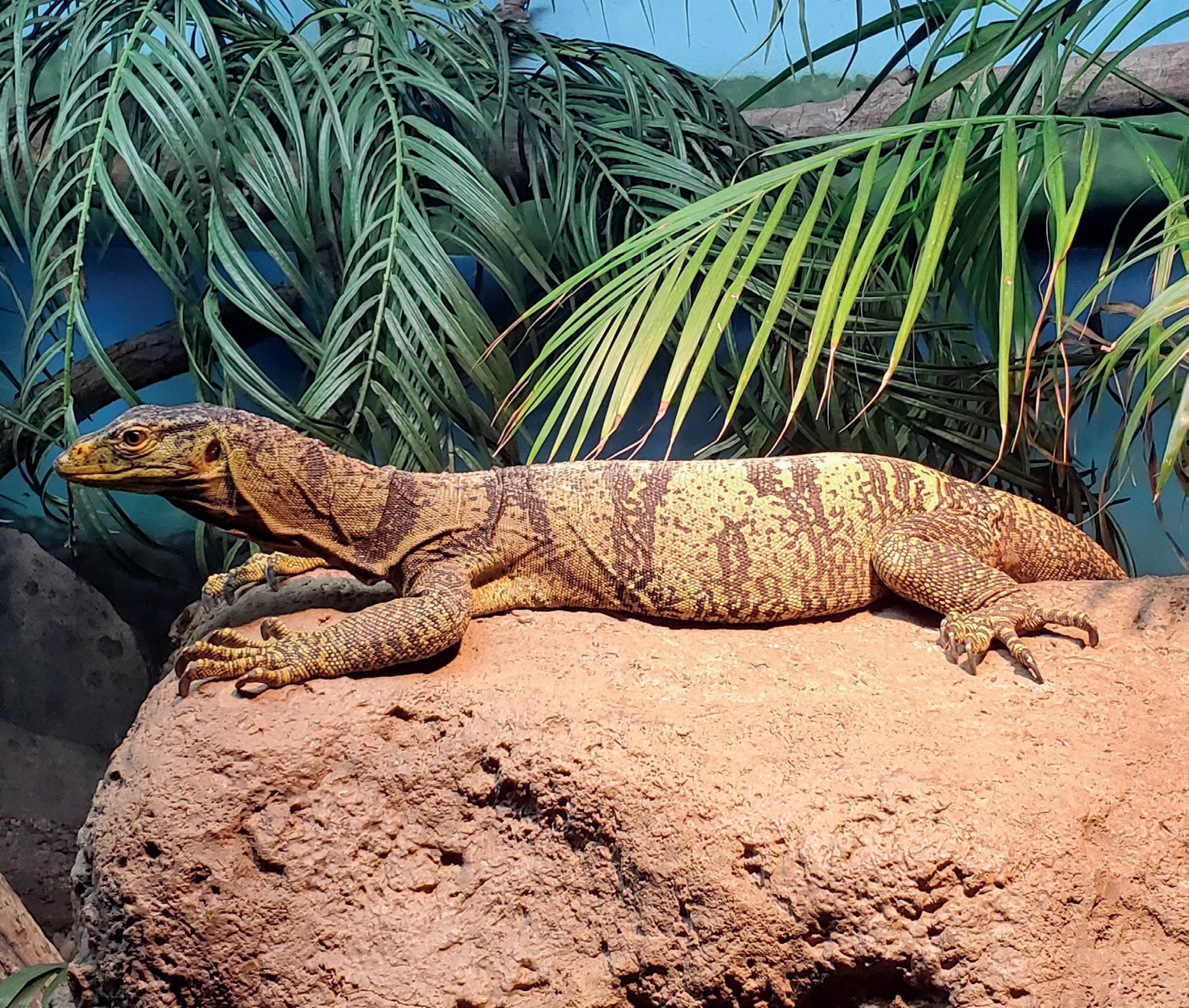
Thought extinct for 130 years
The Gray’s monitor went missing to science for 130 years and is thought to be one of the most Endangered reptiles on Planet Earth. Referred to locally as “Butaan”, this lost dragon hails from South Luzon and the remote Polillo Island in the Phillipines. Gray monitors can reach up to seven feet in length. Unusually for a Varanid, the Gray’s Monitor consumes a largely frugivorous diet, opting to feed on the red fruit of the pandanas palm tree.
Despite the Gray’s monitor being such an impressive and unusual animal, conservation efforts for this species remain few and far between. Herpetologists know very little about the species’ wild distribution and it is thought that over 90% of the potential habitat for this lizard has been cleared in place of palm plantations and rice fields in recent decades. This is because the Gray’s monitor is reliant on unfragmented, lowland rainforests that are rich in Pandanus, Canrium and Ficus trees.
Only a handful of zoological collections are working with the species. With such restricted wild population, difficult-to-source diet preferences and a serious lack of scientific knowledge around the species (not to mention, the immense costs of transporting, keeping and breeding giant lizards), only eight zoos outside of the Phillipines, have exhibited this species. Luckily, two zoos within the Phillipines have managed to frequently breed V. olivaceus for several years and the LA Zoo successfully hatched a clutch of eggs in 2015.
Whilst deforestation in Southeast Asia continues at such a rapid rate, the future of the Gray’s monitor remains bleak.
9 SEPTEMBER 2023
from the
Back
Dead: Revisited
Gray’s monitor (Varanus olivaceus)
Cropan’s boa
Corallus cropanii
Thought extinct for 64 years
The Cropan’s boa is the rarest species of boa on planet Earth. Confined to the rapidly declining Atlantic Forest on the borders of Sao Paulo in Brazil, this species was thought to be extinct since 1953. A public campaign to encourage local people to search for the snake proved successful in 2017 when the first live specimen in over six decades was brought to researchers from the University of Sao Paulo and the Butantan Institute (a biological research centre). The live specimen, which was captured by local farmers, provided the researchers with new opportunities, after studying the same five deceased specimens for many years.
The Butanan Institute published the following information on the day of the discovery (translated from Portuguese): “Known as Boa-do-Ribeira or Boa-de-Cropan this is the second of its species found in its habitat, the Vale-do-Ribeira region of Sao Paulo. The first time was in 1953 where it was described by another herpetologist in the institute.”
“After an initial collection on information, it will be released into its natural environment so that its biology and habits are studied through radiotelemetry device inserted into the animal. This will allow its monitoring in nature and send information to researchers.”
Since the rediscovery of a live specimen in 2017 a handful of dead animals have been found, with the most recent
animal being brought to researchers in March 2021. This animal was unfortunately killed in a road accident by a woman in the Guapiruvu neighbourhood, but due to community outreach programmes, her son identified the rare snake and took it to researchers at the Jiboia do Ribeira Project, who said: “Although it’s a sad picture, we need to look at the positive perspective of the record. The animal represents the tenth individual of the species found, which will be dropped in the scientific collection and all possible information will be taken advantage of.
Arakan forest turtle
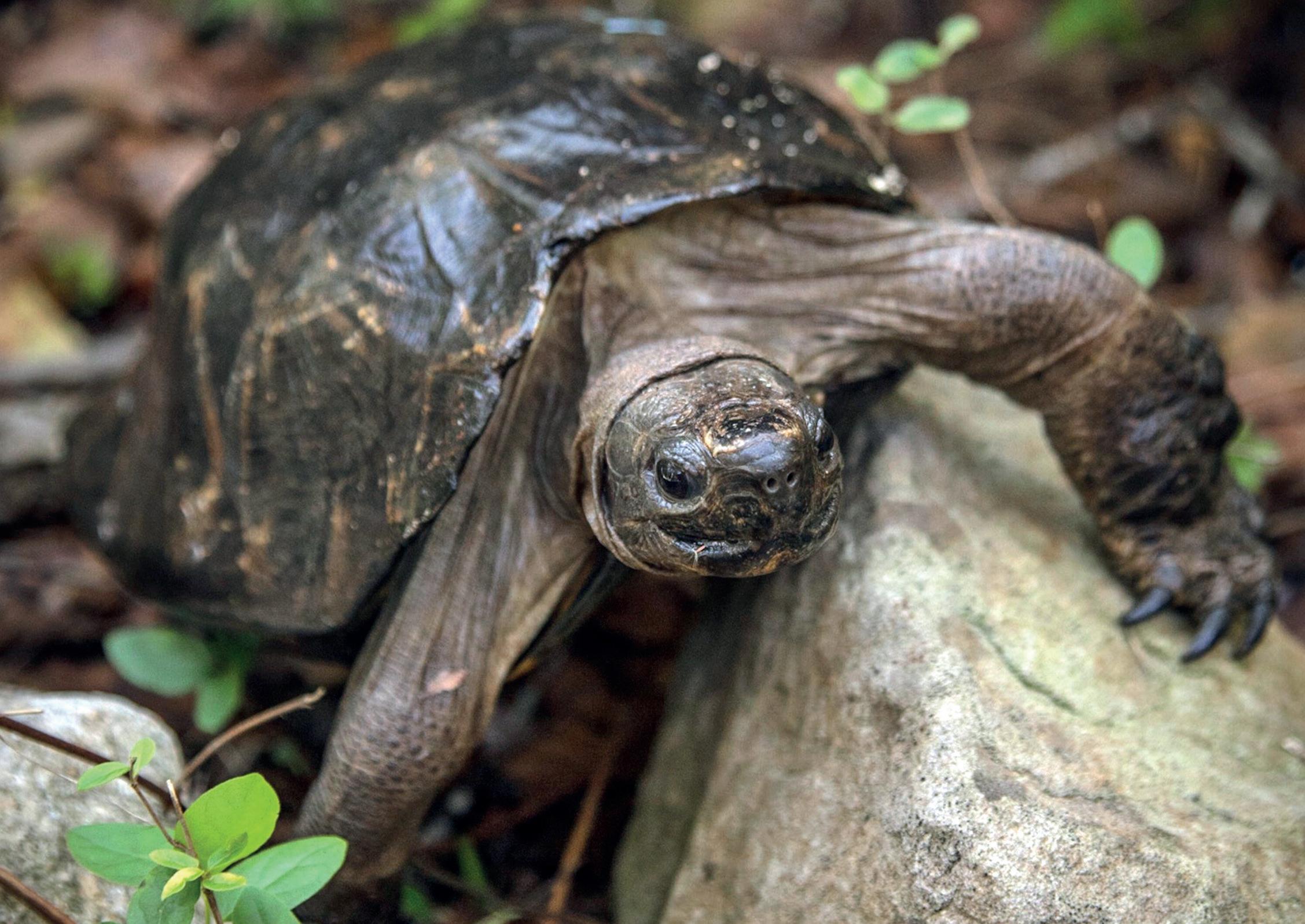
Heosemys depressa
Thought missing for 100 years
The Arakan forest turtle is a species of freshwater turtle native to the Arakan Hills of Western Myanmar. Although the species was officially described way back in 1875, it went “missing” for over 100 years. The IUCN recognises the Arakan forest turtle as one of the most endangered turtle species in the world and has, unsurprisingly, listed it as a Critically Endangered species. Not only is its range extremely limited by the surrounding mountainous areas, but it is also threatened by poaching for the illegal pet trade. In fact, research suggests that local hunting of the species poses little to no risk on population numbers and even their habitats are reasonably secure, given that their range is so inaccessible to certain trade routes. Instead, poaching for Asian pet markets and the highly restricted habitat places these animals under threat. Since their rediscovery in 2009, international conservation organisations are continuing to monitor the turtles.
10 SEPTEMBER 2023
Arakan forest turtle (Heosemys depressa) ©Steven Ives - Turtle Survival Alliance
Adelaide pygmy blue tongue Tiliqua adelaidensis
Thought extinct for 30 years
The Adelaide pygmy blue tongue skink is a species of lizard that was considered extinct for 30 years. The smallest of the blue tongues, T. adelaidensis reaches just 10cm in length. In 1992, a herpetologist in South Australia discovered a brownsnake (Psuedonaja textilis) that had been killed on the side of the road. Being an inquisitive herpetologist, he decided to dissect it. A long-lost pygmy blue tongue was found in the digestive tract of the snake and inspired fresh herpetological efforts to find the missing species.

It is thought the Adelaide pygmy blue tongue was missing for such a long time because of its cryptic burrowing behaviour. T. adelaidensis inhabits very specific, unused spider burrows in the South Australian grasslands. Rarely venturing from their burrow, the pygmy blue tongue is much more secretive than the common Tiliqua species regularly seen in Australian gardens. Adult lizards will often raise their young for almost a month in the same burrow before they outgrow their crowded home and search for a burrow of their own. This underground lifestyle, although very secretive, provides protection from predatory birds and bushfires which the lizards would be exposed to above-surface on their open grassland habitat.
Being so secretive with a very restricted range of just a few
locations just north of Adelaide, captive breeding efforts for this species were largely unsuccessful for many years. As the window to save the species began to close, Monarto Zoo in South Australia finally managed to breed the pygmy blue tongue. Alyssa-Jane Tucker, Spokesperson for Monarto Zoo said: “Last year, we were thrilled to announce a worldfirst in conservation with the successful captive breeding of 14 endangered Pygmy Blue-tongue Lizards. This year, we are proud to continue this success with 12 neonate Pygmy Blue-tongues joining the Monarto Zoo family! Our breeding success represents a major contribution towards the conservation of one of our country’s rarest native reptiles and this year’s births are a significant step forward in safeguarding the species from extinction.”
Of course, much research has been done on the viability of reintroduction and how well captive populations will be sustained in the future. Professor Mike Bull of Flinders University in South Australia has led much of the research that has slowly uncovered the natural history of these secretive skinks. He has discovered that livestock grazing intensity, ‘risky’ behaviours in neonates and co-existence with insects in the burrows could all affect the success of wild relocations. With a dedicated team of researchers making regular breakthroughs, Tiliqua adelaidensis is receiving an incredible level of conservation support. One man’s decision to dissect an eastern brown snake could have been the catalyst that saves this species from extinction.
11 SEPTEMBER 2023
Back from the Dead: Revisited
Adelaide pygmy blue tongue (Tiliqua adelaidensis) ©Atlas of Living Australia
Victorian grassland earless dragon
Tympanocryptis pinguicolla
Thought extinct for 50 years
The Victorian grassland earless dragon was rediscovered after more than 50 years in February 2023. Once common in Southeast Australia, the introduction of non-native predators such as dogs and rats, alongside agricultural and infrastructural development decimated populations to such an extent that the lizard was thought extinct. Two ecologists snapped the dragon and sent the images to experts in the state of Victoria for positive identification. After confirming that the mystery lizard was in fact, the missing T. pinguicolla, work began immediately to protect the remaining population. Now, Australian Government is investing $188,000 towards a conservation project that utilises sniffer dogs to identify more animals.
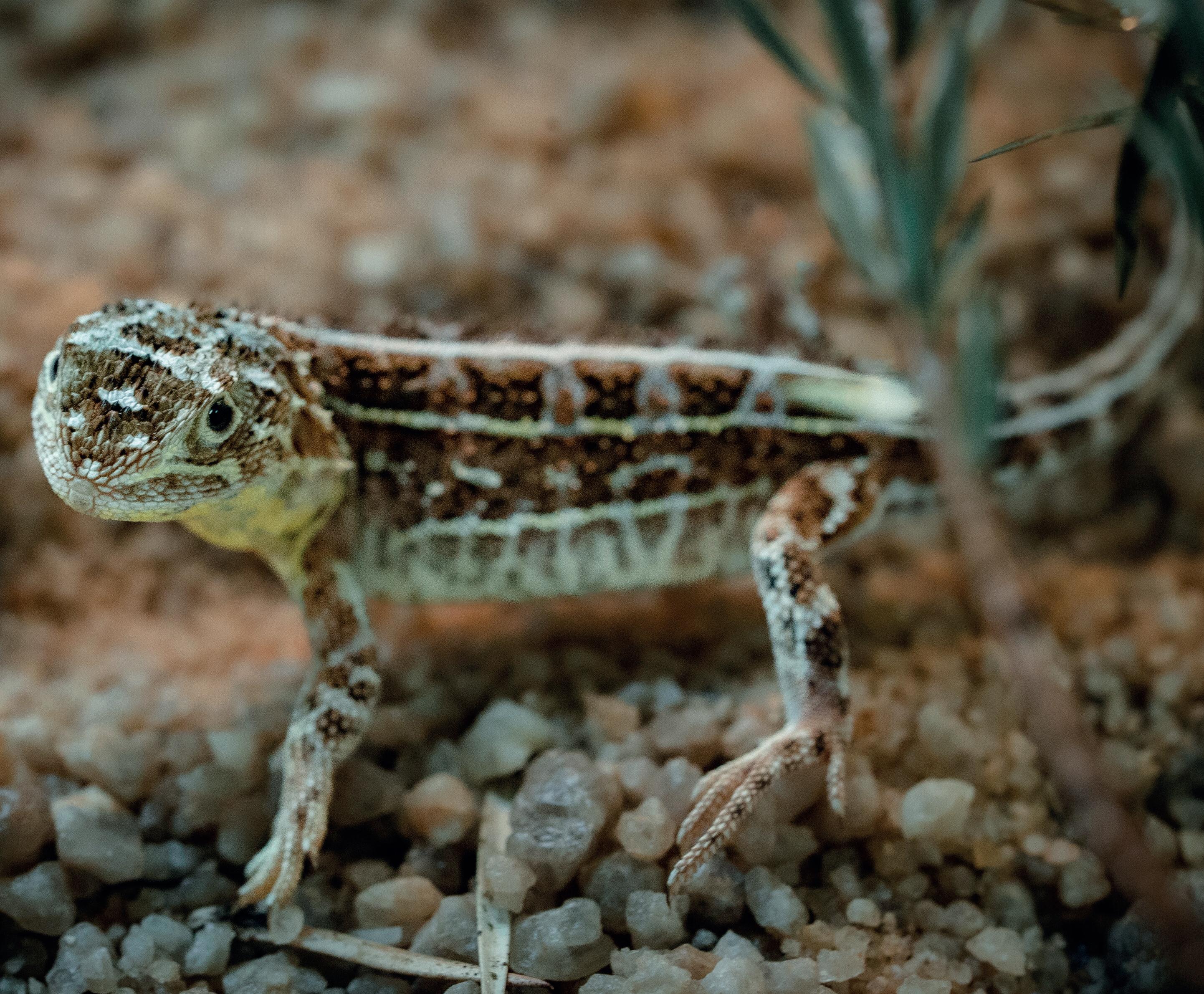
So far, 16 individuals have been found and collected from the wild to take part in a captive breeding programme led by Zoos Victoria. The organisation had actually been seeking the dragons since 2017 and were already prepared for a breeding project in the event that they were found.
“Dragons are a big deal, and to have such an endangered dragon in our population is just something that makes us incredibly excited,” Zoos Victoria chief executive Jenny Gray tells the Herald. “This is probably the most endangered reptile in the world, with only 16 verified individuals in safe care, so to be able to work with an animal like this is both an incredible challenge and incredible opportunity.”
T. pinguicolla lives in the threatened Basalt Grassland habitat, which has seen a 97% reduction in size since European settlement. Unfortunately, six self-sustaining populations must be identified within this habitat if the species is likely to survive the next 50 years. Alternate methods of re-instating captive-bred populations would require acquiring six 100-hectare parcels of land at a cost of up to $30 million and the entire project is expected to cost $56 million over 10 years. Needless to say, the future of the Victorian grassland earless dragon is unpredictable at best.
Crested gecko
Correlophus ciliatus Thought extinct for 126 years
Many of the New Caledonian geckos have quickly become very popular within the pet industry. The crested gecko certainly takes the title of the most popular species from this tiny Pacific island and is now almost as common sight as leopard geckos and bearded dragons in pet shops. In the wild, just five populations of this species exist on two very remote islands off the coast of New Caledonia. Because of this, the crested gecko was not officially observed since it was described in 1866. Many herpetologists thought the species was extinct until 1992 when, after a tropical storm, Robert Seipp found multiple individuals in the rainforest canopy.
Their success in the pet industry is not representative of their conservation status in the wild. The crested gecko is labelled as ‘Vulnerable’ on the IUCN red list
12 SEPTEMBER 2023
Victorian grassland earless dragon (Tympanocryptis pinguicolla) ©Michael Mulvaney
with populations decreasing. With the rise in popularity of this species in captivity comes a new interest in preserving wild populations. Now, the habitat of crested geckos is protected by law. This legislation aims to curve the amount of seasonal non-timber crops which pose a serious threat to the species. Another major conservation concern for the geckos of New Caledonia is the introduction of the electric ant (Wassmania auropunctata) from South America. These insects will actively prey on the small reptiles, spelling ecological disaster for the island.
Because of their extremely restricted and remote range, much of the research around C. ciliatus is based on captive specimens. Luckily their abundance in the pet trade comes largely from their willingness to breed in captivity.
Crested Geckos were previously considered members of the Rhacodactylus genus until they were reclassified in 2012. This group of geckos is truly impressive, with many of them exhibiting complex camouflage patterns and some growing to a considerable size. The ‘Rhacs’ includes other increasingly popular pet species such as the Gargoyle gecko (R.
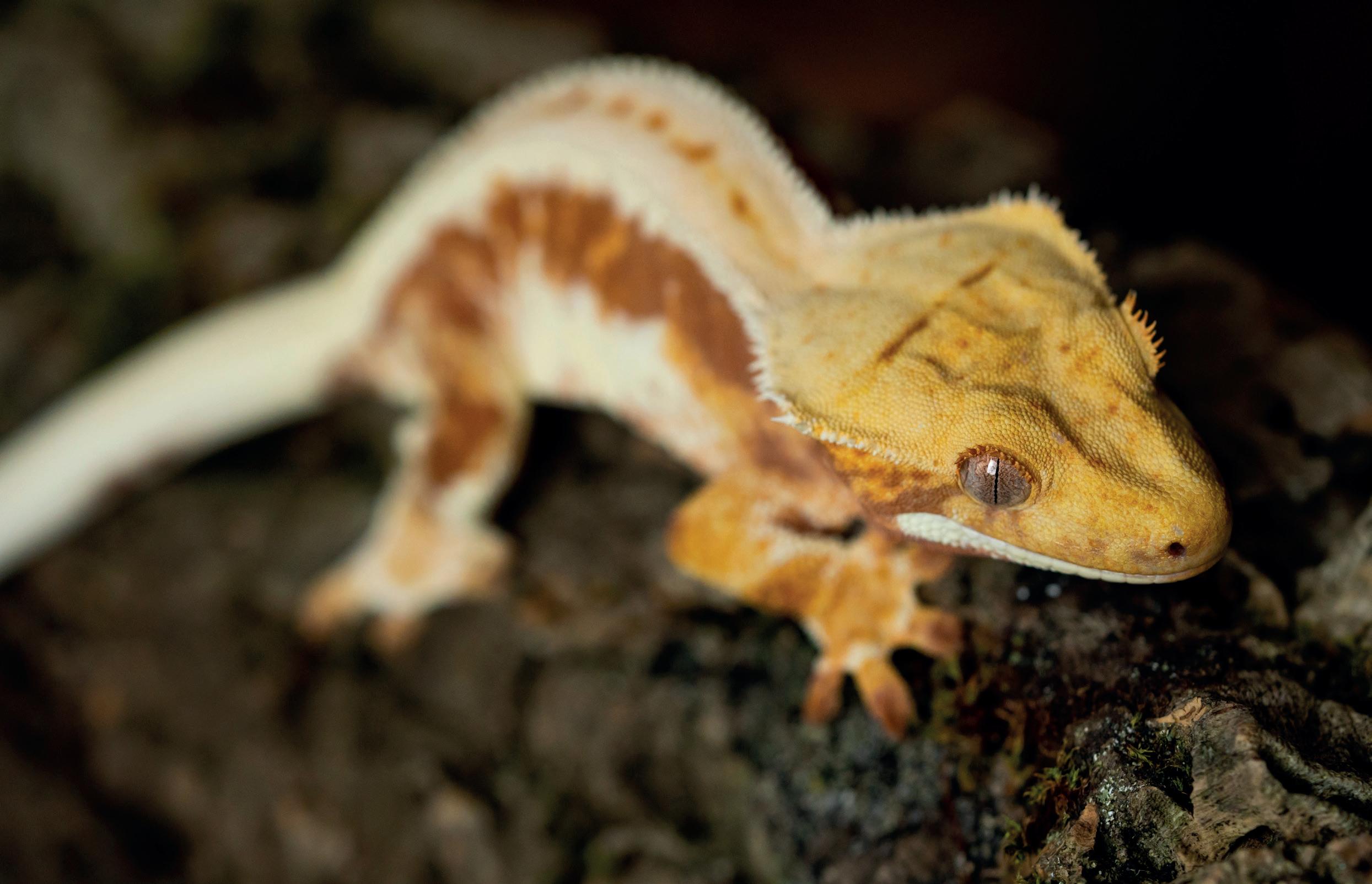
auriculatus) and the ‘Leachie’ or New Caledonia giant gecko (R. leachianus).
La palma giant lizard
Gallotia auaritae
Thought extinct for 500 years
The La Palma giant lizard is a species long shrouded in myths and legends. It is an enormous species of Lacertid, native to the Canary Islands. Like many species on this tiny archipelago off the West coast of Africa, it is thought that its population numbers began to decline some 2,000 years ago when people first settled on the island and it had been presumed Extinct for over 500 years. Growing up to 40cm in length, with bright blue flanks and a bulky head, this species was originally described as a subspecies of the El Hierro giant lizard. Both species were presumed extinct for a long time and herpetologists only had archaeological and historical evidence to verify their existence, however the El Hierro species was rediscovered, alive, in 1974. This sparked a lot of excitement around the Lacertids of the Canaries and in 2007 several sightings, including a photograph of the legendary La Palma giant lizard surfaced. Whilst many people were dubious and several scientific expeditions failed to capture a living individual for DNA analysis, the IUCN listed the species as Critically
Endangered. Sadly, it has now removed the species from the website and whilst ongoing research may once again, uncover this cryptic species on the edge of survival, for now, it remains hidden.
There are several reasons why species in volcanic archipelagos are thought to be extinct, only to be rediscovered many years later.
What Next?
Lazarus species teach us a bittersweet lesson about the need for conservation and zoology in general. As the human population continues to grow rapidly and more wilderness areas are destroyed before we have a chance to study their inhabitants, there are likely to be many extinctions that go almost entirely unnoticed by science. However, the Lazarus taxon gives us a second chance. Sometimes this opportunity arises just at the point of critical interception, other times we receive a chance to understand secretive animals and learn to protect the delicate ecosystems they call home. For many of the readers of this magazine, the story of the crested gecko is most prominent. Avoiding illegal activities and being a responsible pet owner is the bare minimum we can do, but to develop our knowledge and share this with the world, is a giant step in the right direction.
13 SEPTEMBER 2023
Crested gecko (Correlophus ciliatus)
SPECIES SPOTLIGHT
The wonderful world of exotic animals
Antilles pink toe tarantula (Caribena versicolor)

The “Antilles” or “Martinique” pink toe tarantula is an extremely popular species of arboreal tarantula, famed for its docile personality. Furthermore, the Antilles pink toe is perhaps one of the most colourful species in the hobby as it continuously changes colouration from a vibrant blue spiderling to an adult that sports a cacophony of metallic sheens.
In the wild, Caribena versicolor (formerly Avicularia versicolor) inhabits humid forests, where it creates silken retreats in hollow wood and beneath tree bark. In captivity, this should be simulated by providing 70-80% humidity within a tall enclosure. Unfortunately, this high-humidity requirement meant that for a long time, Antilles pink toe tarantulas were considered difficult to keep and prone
to “Sudden Avic Death Syndrome” – a term used to describe the higher, seemingly random, mortality rate in the species. It is now thought that this was caused by keepers reducing ventilation to retain higher humidity levels. Although the species comes from a hot and humid climate, in the wild, it can move further up into the canopy to benefit from coastal winds and shelter from rainstorms to hydroregulate effectively. In captivity, the keeper must provide excellent ventilation whilst retaining reasonably high humidity. Coming from the Caribbean, these spiders also like it warm (22 – 25°C).
The Antilles pink toe is a great beginner tarantula and with hobbyists now captive-breeding the species quite frequently, they are often available throughout the year. Although they are typically more docile than other arboreal tarantulas, they can move very quickly so keepers should still have some level of confidence when working with versicolor. They are medium-growth tarantulas, reaching adult size at about two years of age. Females will often live upwards of fifteen years, while males generally live for five.
14 SEPTEMBER 2023
Spotlight
Species















































































































































































































SEPTEMBER 2023 15
A FIELD OF OPPORTUNITY
Going back to nature with corn snakes.
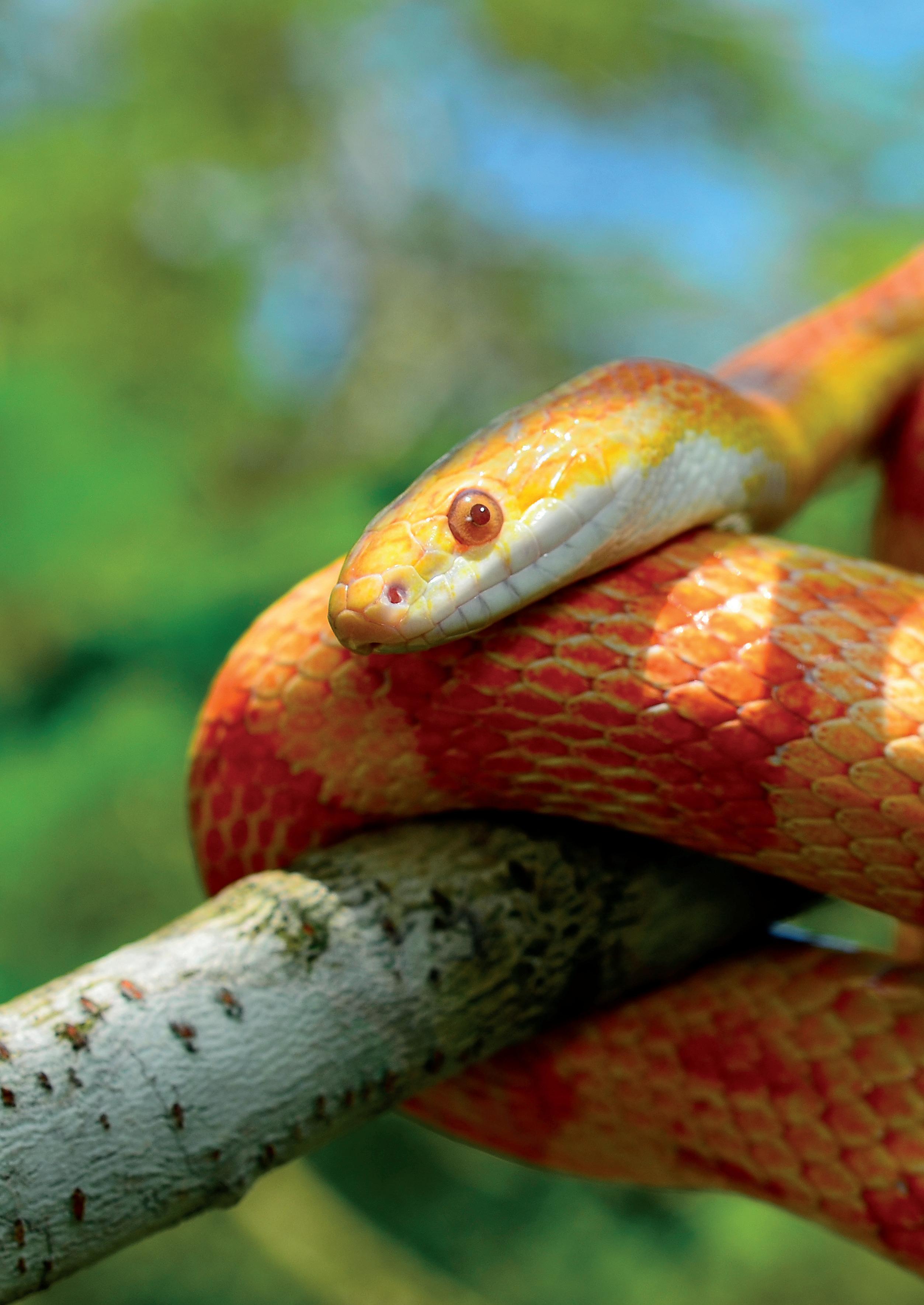
FLASHBACK FEATURE

Corn snakes belong to the Colubridae family. Formerly this species was considered synonymous with the Elaphe genus. Now, the term ‘Elaphe’ loosely represents several genera, most of which are commonly called rat snakes. Being closely related to the rat snakes of North America, corn snakes are medium-sized constrictors that are adaptable by nature and widespread across Eastern and Central USA. However, the corn snake with its distinctive name and iconic patterns became a symbolic icon of the exotic pet boom in the 1980s. Today, they remain one of the most popular pet snakes in the world due to their docile characteristics and reliable availability across the planet. They are a flagship species to inspire young people to engage with herpetology and have changed the perceptions of ophidiophobes for generations. However, the natural history and wild conditions that corn snakes thrive in are rarely the focal points of these interactions, meaning there is a lot more that mother nature can teach us about our much-loved corn snake.
Corn snake diets
The name ‘corn snake’ is thought to come from the patterns on the underside of this species’ belly, which looks like the flecked pattern on maize (or as it is referred to in America; flint corn). However, it is true that, like many rat snakes, corn snakes are found near corn due to their fondness for a rodent diet. However, these constrictors feed on a variety of prey in the wild.
In 2016, Researcher Brett Degregorio (et al) at the Arkansas Cooperative Fish and Wildlife Research Unit studied the ‘nest raiding’ behaviour of corn snakes. He video recorded 97 nest sites and discovered that “of the four snake species documented preying on nests at our site, Corn snakes were the only exclusively nocturnal nest predator, arriving at nests between 20:24 and 02:20. Corn snakes were nearly five times more likely to prey on nestlings than eggs, suggesting that they may locate nests
visually during the day. On four occasions, corn snakes arrived at nests shortly after or while other snakes preyed on nestlings, indicating that corn snakes may use cues provided by other snakes to locate prey.”
This is only a snapshot of the species’ natural diet which only occurs during nesting season, so chicks should only be provided infrequently during spring. Keepers who are building a first, or new enclosure should consider installing a cork bark tube in an elevated position which they can utilise as a nest-feeding platform in the future. Throughout the rest of the year, rodents make up the bulk of the corn snake’s wild diet. Youngsters will regularly feed on amphibians and small lizards too. Appropriately sized rodents are therefore the best option as a ’staple’ diet, but ‘snake sausages’ were once popular and experimentation with shop-bought frogs’ legs and quail eggs can help vary the diet (although they should only be provided every 6 months as a treat).
18 SEPTEMBER 2023
A Field of Opportunity
Enclosure and environment
Over time, our perception of what makes an ideal corn snake enclosure has changed. From heat mats replaced with overhead heating and lignocel replaced with bioactive substrates, the provision of naturalistic vivaria is becoming much more commonplace. However, one area that is hotly contested is the arboreality of corn snakes. We know from diet analysis that corn snakes will venture reasonably high off the ground to feed on bird nests, but is it fundamental to their development?
In a paper published in the Journal of Zoo and Aquarium Research, Paul Rose at the University of Exeter and Steve Nash at Sparsholt College compared behaviours of two populations of juvenile corn snakes, one in a naturalistic enclosure, another in a basic set-up. Paul writes: “Corn snakes are classed as rat snakes, a group of snakes known to be highly exploratory, preferring a heterogeneous
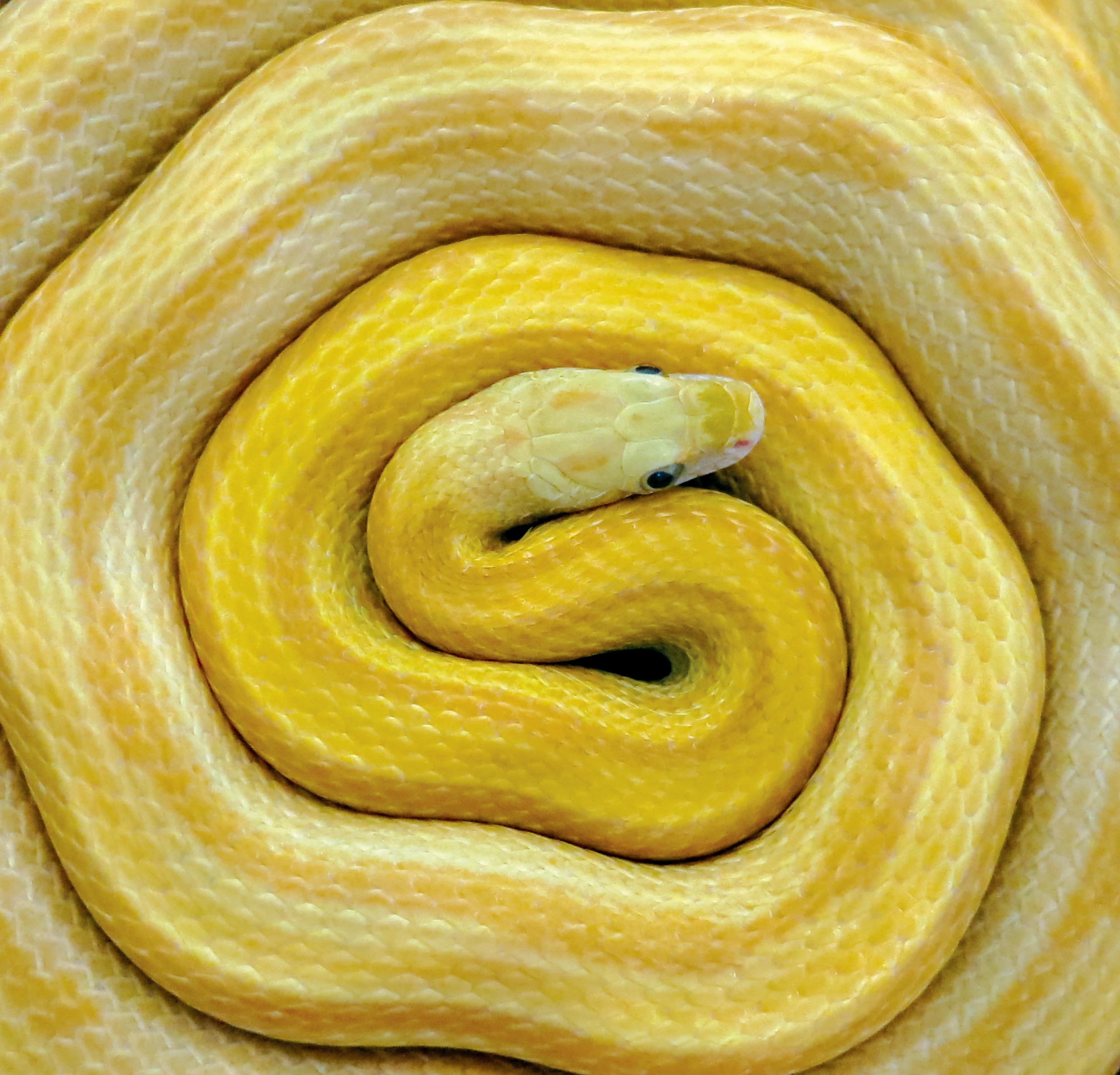
habitat of natural and man-made environments. These exploratory traits should be encouraged in captive enclosures.”
“Comparison of the two populations highlighted the effect that extra furnishings have on the location of snakes in their enclosure; those in an enriched exhibit spent 31.7% of their time exposed and on view, whereas limited furnishings caused the snakes to be hidden for 98.6% of the total time observed. Snakes in the non-enriched exhibit, whilst provided with limited climbing opportunities, still did not use this element of their environment; yet an increase in the availability of climbing “material” showed that the snakes spent 64.3% [of their time] off the ground.”
Whilst we know that environmental enrichment is key to successful husbandry, creating a true biotope for a corn snake may prove difficult. As an adaptable species, the
19 SEPTEMBER 2023
corn snake can be found across a variety of habitats from rocky outcrops to wetlands and urban environments to pine forests. With New Jersey (at the Northernmost of its range) dropping below 0°C in winter and Florida (at the Southernmost tip) reaching upwards of 38°C in summer, this is a versatile species. This has given the corn snake a grasp of the Caribbean, where it is considered a widespread invasive species. Whilst this versatility makes for an undeniably hardy snake, it presents challenges to keepers looking to replicate the exact wild conditions of the species as this will vary across localities.

Keepers should be aiming for a happy medium, but still providing all the core components of good husbandry such as a full light spectrum and deep-penetrating overhead heat. This can best be achieved by combining a Zone 1 T5 or T8 tube with an incandescent spot bulb. The basking spot should reach a comfortable 32°C. The ambient temperature should be around 26°C, dropping slightly lower in the ‘cool end’. Night temperatures should drop as low as 20°C and experienced keepers can provide some seasonality by dropping ambient temperatures even further through the winter. In Tallahassee, Florida in the heart of their range, summer provides around 13 hours of daylight while winter is around 11. Programming a thermostat to turn the spot bulb on for one hour before the UVB source will mimic sunrise (and vice versa for sunset). In Florida, humidity averages around 90% in the morning, but drops to around 50% in the afternoon. This is consistent throughout the year but has the greatest contrast during the summer months (94% morning, 55% afternoon). Therefore, keepers should aim for a steady 60% humidity. Spraying the enclosure at night will keep a high humidity, which will eventually dry out through the following day.
Keepers should also be providing their adult snakes with as much room as they can accommodate. Whilst young snakes may benefit from a smaller, secure enclosure, adults that are feeding readily will appreciate the opportunity to stretch out. As a docile species that tolerates handling well, keepers can create entire rooms full of enrichment opportunities, such as cardboard boxes, tubes, packing peanuts, climbing frames and much more. Sandpits full of different substrates, or fresh water can help maximise the enrichment available to a pet snake. As a crepuscular species, it is best for keepers to accommodate this during the evening hours when the snake is most active. Providing enrichment should be a rewarding process for both the snake and the keeper and can encompass a whole spectrum of activities to stimulate the cognitive, physical, and sensory abilities of the animal.
Captivity vs the wild
Whilst we should be looking towards the wild to replicate the most ideal conditions for our animals, sometimes that can be difficult when a species has been bred in captivity for such a long time.
Stephen Sharp had been keeping reptiles since 1971 and began breeding corn snakes in the early 1980s. As someone who has observed the rise in popularity for this species and is responsible for producing the great grandparents of some of the snakes in captivity today, as well as pioneering early experimental use of UV in herpetoculture in the UK, he has seen corn snake keeping blossom over the decades. He told Exotics Keeper Magazine: “Across the corn snakes’ range, there are lots of distinct locality populations, but many of the ones we have
20 SEPTEMBER 2023
A Field of Opportunity
Root Beer
in captivity today are cross-bred to some extent, of these locality populations. It would be interesting to do some genetic analysis of the corns that exist in the hobby today. There was so much hybridisation back in the 1970s and 80s in the UK that I would say many “corns” back then had some rat snake in them. Certain genes are accepted as “corn snakes” today, despite the fact they were produced through hybridisation. Some are more obvious such as ‘ultra’ which is said to originate from the grey rat snake (P. spiloides).
“It is nothing new, cross-breeding certainly happens in the wild, where corn snakes share their distribution with other rat snakes, but this happens much more frequently in captivity. In the 1970s there just wasn’t dedicated reptile shops so a handful of snakes, imported from the US would be housed together in a pet shop. In the case of corns and rats there was the possibility of hybridisation. In the case of kingsnakes, it would be much worse!”
“Because these were the earliest snakes to enter the hobby, there was a lot of contamination in locality bloodlines. At the time people didn’t realise, it wasn’t until the early 90s that the hobby tried to create a genetic database for the corn snakes in captivity. There were two databases, one in the US and one here, but neither of them had a strict confirmation process. So, people would register their animals without absolute certainty of their genetics, which defeated the point of the database.”
A Field of Opportunity
Variation in morphs
There are (at the time of writing) 849 recognised corn snake morphs and the number continues to grow. Some of the earliest colour mutations are from wildtypes that were selectively bred in the 1980s. The ‘Okeetee’ was first produced by Kathy Love from a locality found in Jasper County, South Carolina. With bold, distinctive saddle markings, this stunning colouration was one of the very first recognised morphs. Other wild types include the ‘Alabama’ which has darker colouration, the ‘keys’ which has lighter colouration and the ‘Miami’ which displays a lot of grey pigment. From here, the endless possibilities of morph breeding began.
For the most part, the variation between these animals is entirely morphological. However, some morphs do have slightly different care requirements and can be prone to genetic conditions.

Title If you want a job done properly…
Stephen explains: “For me, the reason corns became so popular was simply the isolation of genes which produced different colour morphs. Producing morphs became the lifeblood of the hobby. Amel was the first gene in corn production. It reduces black creating a bright red/orange/yellow corn. Other early genes are Anery, which reduces red and created a black/brown/silver corn. Caramel produces a straw colour morph. Lavender produces a “mocca” colour corn. Hypo reduces black and produces a much brighter coloured snake. By mixing and matching these genes, and others, the vast array of colour morphs we know and love today were created.”
“In my opinion, I wouldn’t use UV for an Amel corn snake. Amelanistic means they lack the black pigment that helps protect them from UV burns. You can tell when an Amel has been exposed to high UV as the sheds will come off much thicker, which is skin damage.”

“There are also some morphs which are known to have potential issues. For example, “sunkissed” corns can suffer from a head wobble called ‘stargazing’. It is thought sunkissed may have originated as a localised hybrid population involving corns and king snakes possibly 1000’s of years ago. Stargazing became a problem in some captive-bred sunkissed lines via selective breeding.”
“It is also common for Lavenders to suffer from spinal kinks. One line of Palmettos had some Texas rat snake (Pantherophis obsoletus lindheimeri) blood in them, which caused some to suffer from ‘bug eye’. There are lots of perfectly healthy ones now, but one line did have issues.”
Now we understand the importance of genetics much better, breeders are better able to network with one another to produce healthier offspring from varied bloodlines. With a large number of snakes being produced in breeding facilities, some breeders are currently operating digitalised databases to track the genetics of each individual animal. This responsible approach means that problematic genes are controlled much better now.
The process of breeding
Many of the most popular species today reached their position in the hobby due to their hardy characteristics, docile personalities, and willingness to breed. Refining the process to breed corn snakes in the 1980s is why now, even with exotics keeping rising in popularity, “corns” are readily available throughout the year.



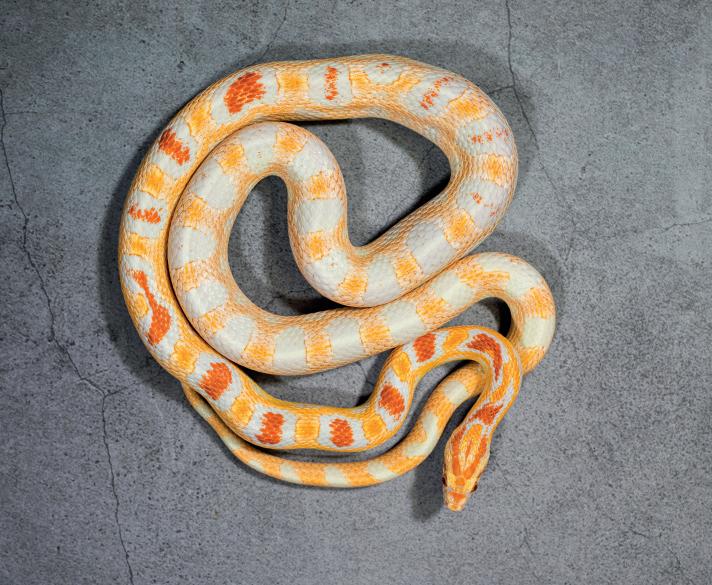

“Breeding corn snakes is quite straight forward” explained Stephen. “Males reach sexual maturity from around two years old whereas females are closer to three. If the snakes are younger than five years old, they shouldn’t have any problems breeding once they’re paired up. After this, they require a cooling process to encourage better sperm count. Then, around two months after pairing, the female should lay a clutch of eggs and two months after that there should be hatchlings.”
The pairing of animals generally happens around February/March. Like most species, corn snakes benefit from the replication of the seasons to prompt breeding. Whilst it is not entirely necessary to provide environmental fluctuations, it does generally provide more successful reproduction.
Stephen continued: “Many breeders will
22 SEPTEMBER 2023 A Field of Opportunity
Amel Masque
Diffused Pied
Extreme Reverse Okeetee Fire Honey
males and allows the breeder to keep track of when the female sheds and begins producing pheromones.”
Once the female sheds post-brumation, she should begin producing pheromones and the two adult corns can be paired up. Females are usually introduced to the male’s enclosure, so they can be tracked and paired with multiple partners in a season. Once the eggs are laid, they must be incubated for approximately two months before they hatch. Stephen continued: “These should then hatch between six and a half and 12 weeks. After 12 weeks, it is unlikely the egg will be successful and the more time that goes on, the less successful a clutch will be. Interestingly though, the animals that do survive after being incubated longer tend to be bigger and more robust.”
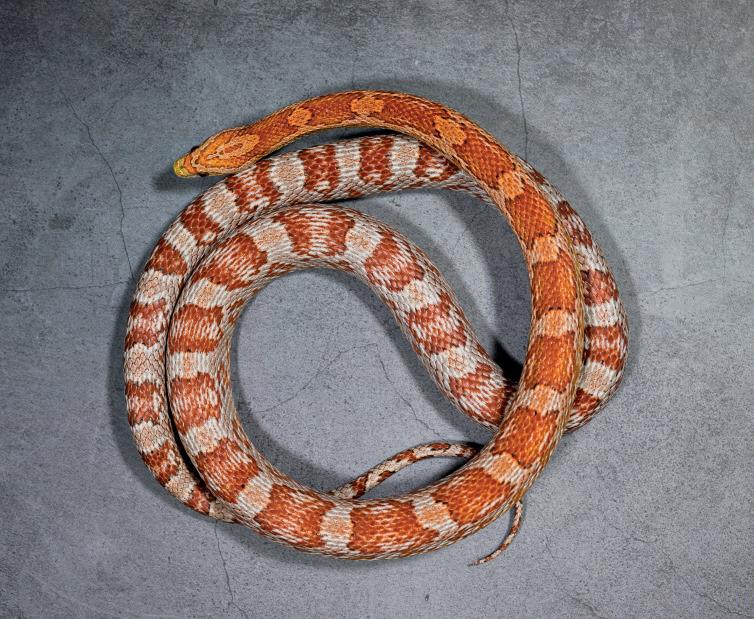
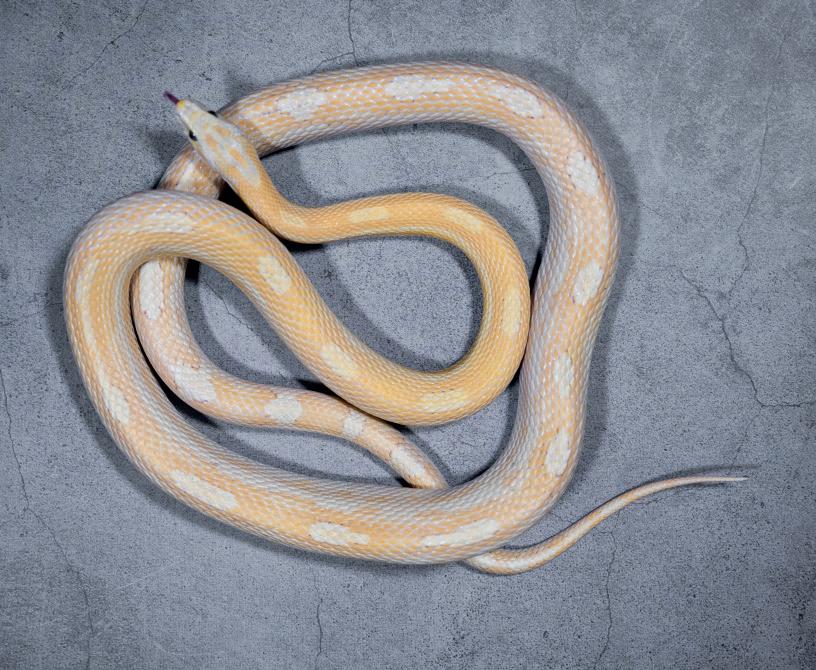
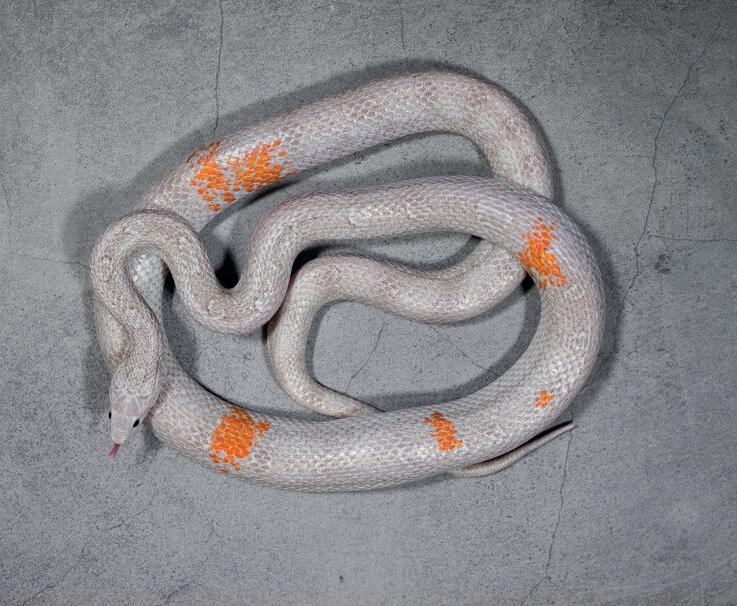
Most breeders will keep hatchlings for at least 3 weeks to ensure they are feeding. Commercial breeders may choose to hold onto their animals a little longer to do thorough health checks.
In the early days
Stephen began his hobby during some of the earliest days of herpetoculture. As a newly emerging discipline, there were few (if any) dedicated products

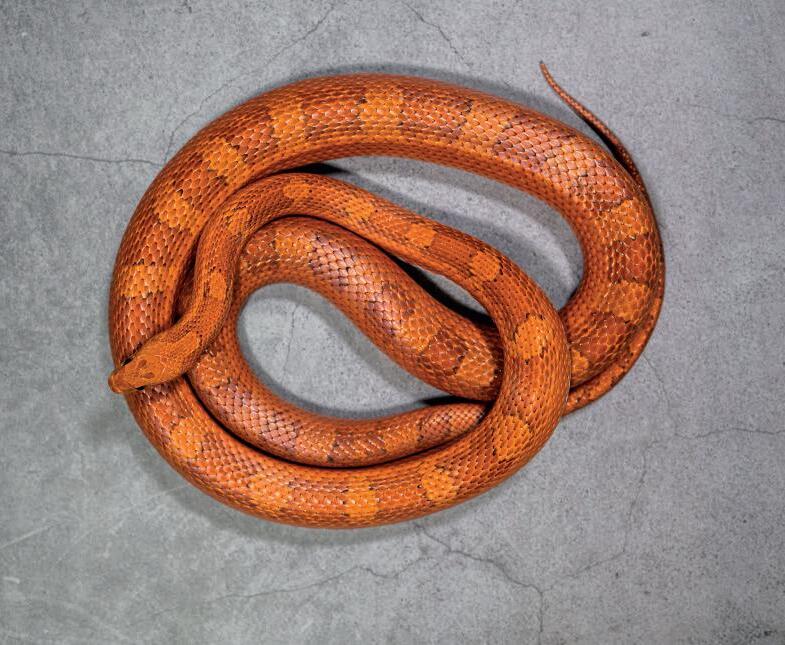
and light. All lighting and thermostats came from the tropical fish hobby.”
“I was one of the first reptile keepers to import UV lights (Black lights and then later Tru-Lite) into the UK. I had read a book that linked UV and improved D3 production. I obtained these for use with lizards initially and years later, decided to try them with some Western fox snakes (Pantherophis vulpinus) I had that were notoriously bad breeders. Once we introduced UV, they were excellent and bred for 12 years. In fact, I would guess most fox snakes in the UK hobby today come from that pair. I also found a lot of success with Macklots pythons (Liasis mackloti) at that time because of the UV. Blood pythons under UV became aggressive, which is much more like their wild counterparts. They would be aggressive and much more active for several hours after turning the light off. This led me to supply Black Lights to several zoos and private keepers.”
“This wasn’t all great though and UV wasn’t without its problems. I had worked with the Ministry of Agriculture, Fisheries and Food (MAFF) before it was DEFRA and they had reports of ‘hard scale back’ particularly in Bosc monitor lizards (Varanus exanthematicus) which were common pets at the time. These were reactions to the high-intensity UV bulbs, that were
Herpetoculture is a constantly evolving
facilitates the production of groundbreaking products. Corn snakes have been at the heart of herpetoculture for decades and with their docile behaviour and hardy nature, are unlikely to waiver in popularity any time soon. Although there a million ways to keep a corn snake healthy, it is those innovative keepers at the forefront of good welfare standards that will be celebrated in the hobby for

23 SEPTEMBER 2023 A Field of Opportunity
Ornate horned frog ( )
Paradox Platinum Diffused
Pied
Topaz Motley
Fire Tessera
Ultra Mel

IT’S A FOAM PARTY
Breeding Japanese flying frogs.
 By Gary Miller
A Japanese flying frog (Zhangixalus arboreus)
By Gary Miller
A Japanese flying frog (Zhangixalus arboreus)
Known by a few common names; forest green tree frog, Japanese flying tree frog and Kinugasa flying tree frog, Zhangixalus arboreus is a charismatic yet rarelyseen frog in the hobby. It is endemic to Japan and found throughout the central and northern regions of the country. They are large, highly variable frogs, with some females reaching up to 9cm in length. Being a species that is rarely kept in the UK, it is likely that the following feature discusses the first-ever UK captive-breeding of the Japanese flying frog.
About the author: Gary Miller has kept and worked with reptiles and amphibians for over 20 years. He has joined NGO projects, lectured at universities and consulted for the BBC. He is now “Head of Zoo” at Sparsholt College. Gary attributes his love for the natural world to his dad and is now delighted to share his passion with the next generation of herptile keepers.
Making sure they don’t Croak it!
Because of their natural range, Z. arboreus make a great choice for a thermally robust species to keep in the UK. My 1.4 group inhabit a custom-built 100cm x 50cm x 100cm glass tank that is situated in my unheated conservatory, year-round. I do not supply them with any additional heat source, except for the small amount given off by the UV light, allowing them to experience a sheltered but varied range of temperatures, in line with what the UK has to offer. My group have experienced temperatures of nearly 40°C in the summer, down to 1°C in the winter with no issues.
For UV, I supply them with a 7% T5 bulb, offering them a UVI of around 3.0 on top of the leaves at the highest point in the enclosure. The duration of light/day is controlled by a smart timer that allows me to gradually change the daylight hours to match the daylight hours here in the UK, from my phone, wherever I am.
For décor, I use oak heartwood. Some of this is for the aesthetic more importantly, I have used this wood in many different enclosures, and it is incredibly durable when it comes to high-humidity enclosures and even full submersion in water. These are positioned securely
26 SEPTEMBER 2023 It’s a Foam Party
around the enclosure to allow for climbing and jumping behaviours. They also allow the animals to transition across temperature, light and humidity gradients.
Live plants are a ‘must’ for tree frogs. They play a large part in regulating the humidity levels in the tank when they respire at night and release water. My adults sit at 50-60% humidity during the day and up to 80% at night, just with the use of live plants and no additional spraying.
I have planted two large paper plants (Fatsia japonica) because they are hardy plants that offer large leaves that are strong enough to support these heavy frogs and provide lots of cover. Décor should be all about choice and providing lots of little microhabitats of varying heat, light and humidity levels across the enclosure.
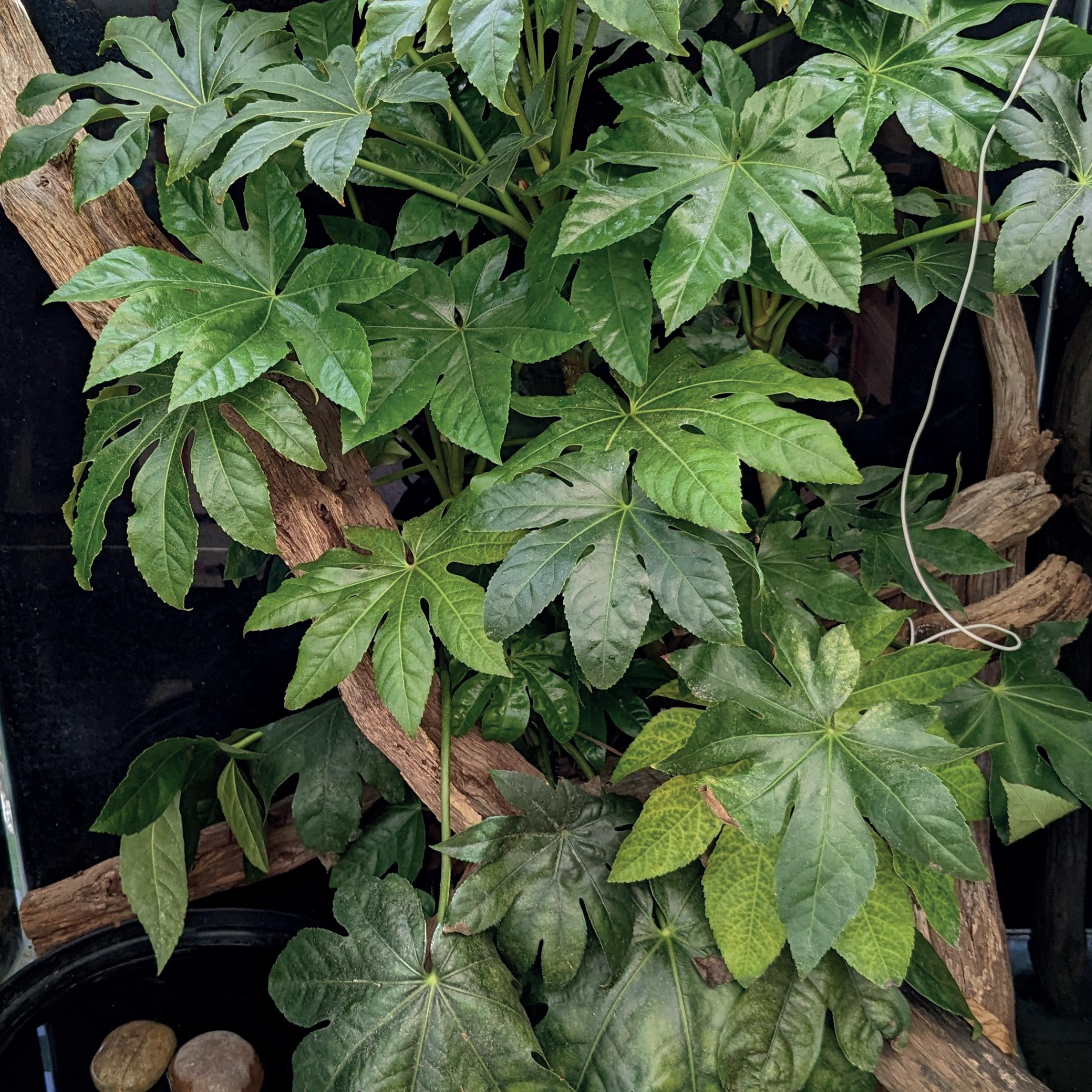
Their water provision is a large shallow dish that takes up almost 50% of the floor space.
I find plant pot saucers particularly good when looking for a cheap water dish that comes in lots of colours and sizes. This is half filled with mature water (tap water left to mature over 48 hours) and changed every day.
Japanese flying frogs are ferocious eaters and readily accept a range of invertebrates, both scattered and tong-fed. I mostly feed brown and black crickets, but occasionally offer locusts and cockroaches. They are fed twice a week and usually take 3-6 crickets each, depending on the time of year and breeding cycle. All live food is gut loaded and a small amount of calcium supplement is dusted on before feeding out.
27 SEPTEMBER 2023
It’s a Foam Party
The enclosure during “dry season”
NutriRep™ is a complete calcium, vitamin & mineral balancing supplement with D3. It can be dusted onto all food sources including insects, meats & vegetables. No other supplement is required.
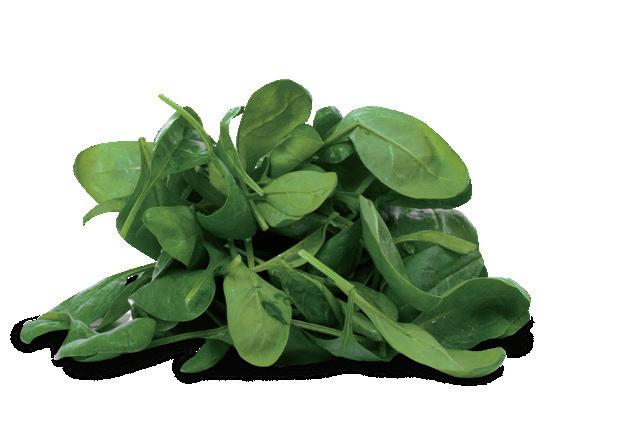

with pink or yellow discolouration around the abdomen?
the Tadpole Doctor



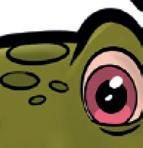
Disease in your captive tadpoles?
Have you seen any disease, noticed unusual symptoms, or had unexpected deaths in your tadpoles?
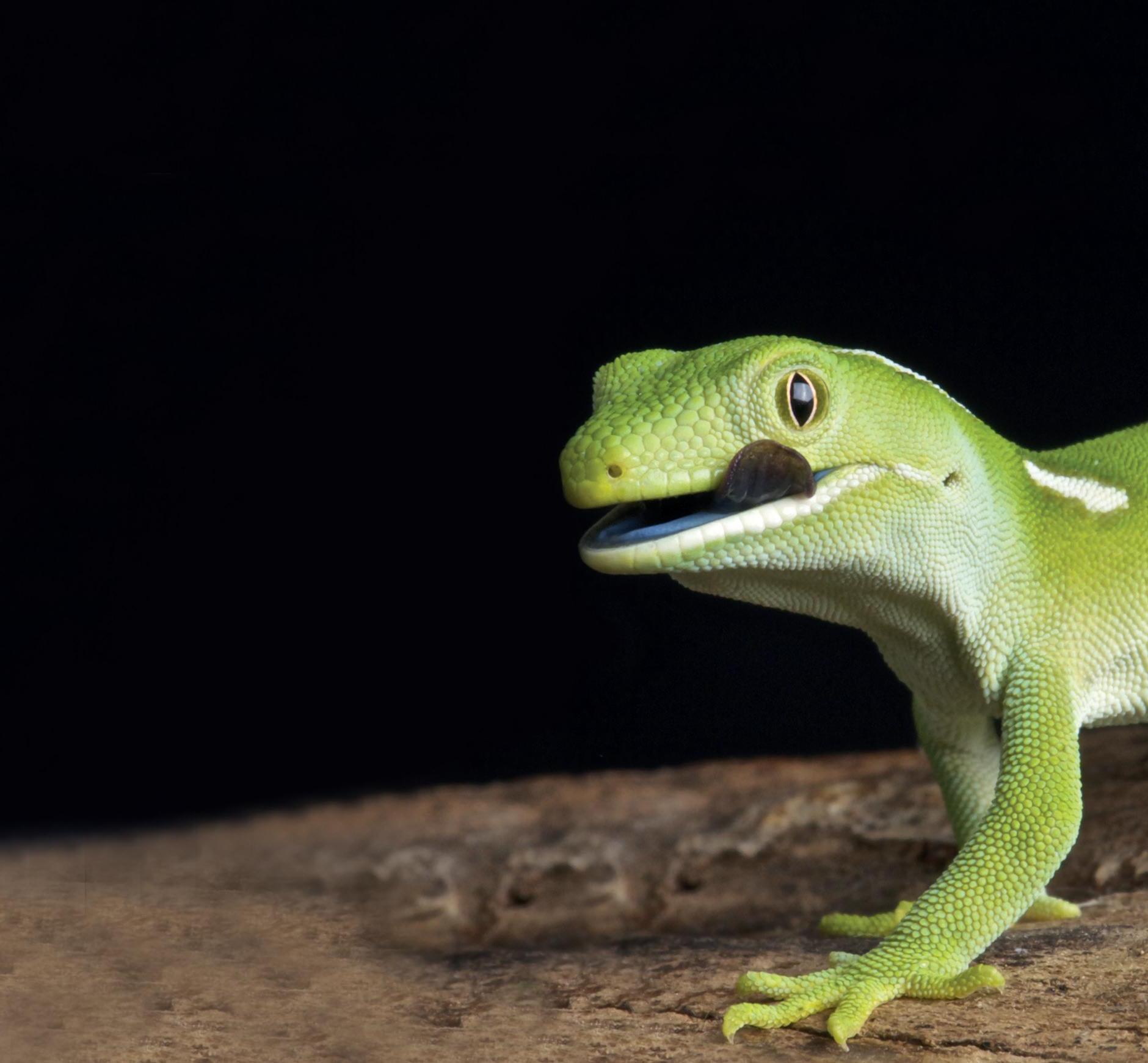
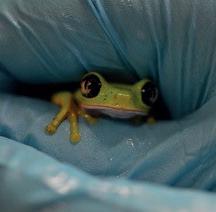


Are your tadpoles bloated – maybe with pink or yellow discolouration around the abdomen?
Have you observed any change in their behaviour, such as: sudden and erratic movements, swimming in circles, loss of equilibrium, sluggishness, floating at the surface or death?
Have you observed any change in their behaviour, such as: sudden and erratic movements, swimming in circles, loss of equilibrium, sluggishness, floating at the surface or death?

Researchers at the University of Oxford need your help. They are trying to track the spread of a newly identified disease of tadpoles. If you suspect that your tadpoles are showing signs of the disease symptoms mentioned above, please make contact at http://tadpole-doctor.co.uk.

Researchers at the University of Oxford need your help. They are trying to track the spread of a newly identified disease of tadpoles.

If you suspect that your tadpoles are showing signs of the disease symptoms mentioned above, please make contact at http://tadpole-doctor.co.uk

http://tadpole-doctor.co.uk
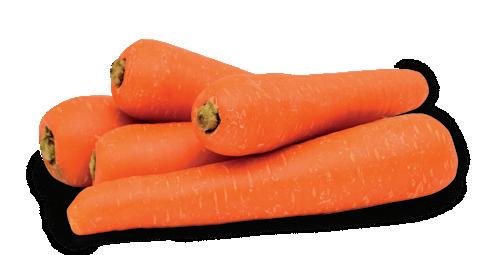









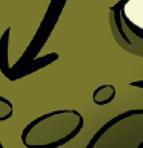



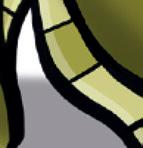






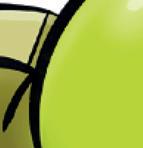


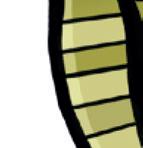
















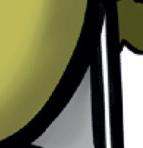




























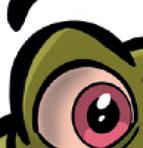


28 SEPTEMBER 2023
The Royal Society and the University of Oxford bear no responsibility for this project.
tadpole-doctor.co.uk The Royal Society and the University of Oxford bear no responsibility for this project.
Hibernation
As the days draw in and the temperature starts to drop below 10°C (usually in late November), the frogs slow down their feeding and start to hide away, tucking themselves into the nooks of the plants, fairly low down in the tank. At this point, I supply them with a deep soil and leaf litter substrate which they proceed to bury themselves in. They turn a very dark brown colour and become dormant, only popping out on the fairest days to rehydrate in the water before returning straight to the soil.
Throughout this hibernation, I offer no food and reduce the water dish size down. It can be nerve-racking taking your herp through hibernation, especially when they are dealing with temperatures just above 0°C. Furthermore, on the few occasions that you do see them, you could easily mistake them as dead, non-responsive brown lumps in a hollow of soil. But, this is a natural process that these hardy frogs have evolved to endure.
Come April, the temperature begins regularly rising above 10°C and they start to wake up and can be seen frequenting the water more regularly. At this point, I increase the water dish size back up, remove the substrate and start chucking in the occasional few crickets and check each day for their disappearance. Before long, the frogs get back to climbing to the tank's heights and accepting live food from tongs again.
Breeding
In the wild, this species will breed with the coming of the rains from May to July, producing foam nests with hundreds of eggs inside. A bit of research showed me that precipitation and nest location were factors that contributed to the successful hatching of the tadpoles in the wild sites that have been surveyed.



With that in mind, I began spraying the tank every evening from the start of May and gave them all an extra feed each week. The male would occasionally chirp at this time and seemed to be staying around the water's edge most of the time. It was time to build a rain chamber.
Although rain chambers are often created out of practical necessity, I felt it was important to offer the inhabitants choice within their enclosure. I carefully considered the placement of plants to offer areas in the tank where there was shelter from the rain and leaves with varying degrees of wetness. This allowed me to better understand what the frogs would gravitate towards when positioning their nests.
I went with a simple enough design of one square of tubing tied centrally to the top of the enclosure with a pump and filter attached. The plants were moved on top of mercenary brinks to either side of the enclosure. This allowed the rain to fall centrally and interact with only a portion of the leavessome drenched, some lightly sprayed and some almost dry.
29 SEPTEMBER 2023 It’s a Foam Party
An adult Japanese flying frog (Zhangixalus arboreus) An example of a “foam” nest from the species
The bricks kept the plants out of the reservoir of water at the bottom of the tank. This artificial pool was about 8cm deep. There was no need to add a water heater like I have done for other species in the past as the mature water was stored in the conservatory and became naturally heated to around 18-20°C. The rain was set to come on for 20 mins at a time during the day around 3 hours apart and then at night, one long burst of an hour, controlled via my phone and a smart plug.
Almost immediately, this process encouraged the male to begin croaking. This was a stereotypical call but with tempo changes thrown in, almost like having someone laughing audibly in your house, day and night…for two months!
By the first evening, the male had latched on to a female in amplexus and for the next couple of days, switched partners. On the fifth day, I came home from work to find a large white foam nest, about the size of a fist, hanging from one of the leaves, over the water. Two days later, another one. The male proceeded to find each female in turn and do his thing.
The tadpole stage
The eggs are hidden in the middle of the foam. Small, cream-coloured spheres that, as they grow, begin to sink through the foam towards the bottom. It was not until day five that I saw movement. The odd flicker of tiny black tails let me know the nests were indeed fertile. On day seven I saw the tadpoles begin to breach the foam. Only a few tadpoles breached at first, but then with the timings of the rain, more and more. As the nest disintegrated the tadpoles surfed down the leaves into the water.
I moved the tadpoles into a nursery tank. Again, the water temp was kept around 18-20°C at around 8cm depth but with the addition of some cork pieces to provide cover, and pond weed to help clean and aerate the water. The nursery tank had a 2.4% T5 UV bulb and allowed for a UVI of 1.0 from the surface of the cork pieces.
Daily, I would take out about 5-10% of the water, removing the faeces and uneaten food from the bottom of the tank with a large pipette and then offering fresh food in its place. I tried several different feed types; lettuce,
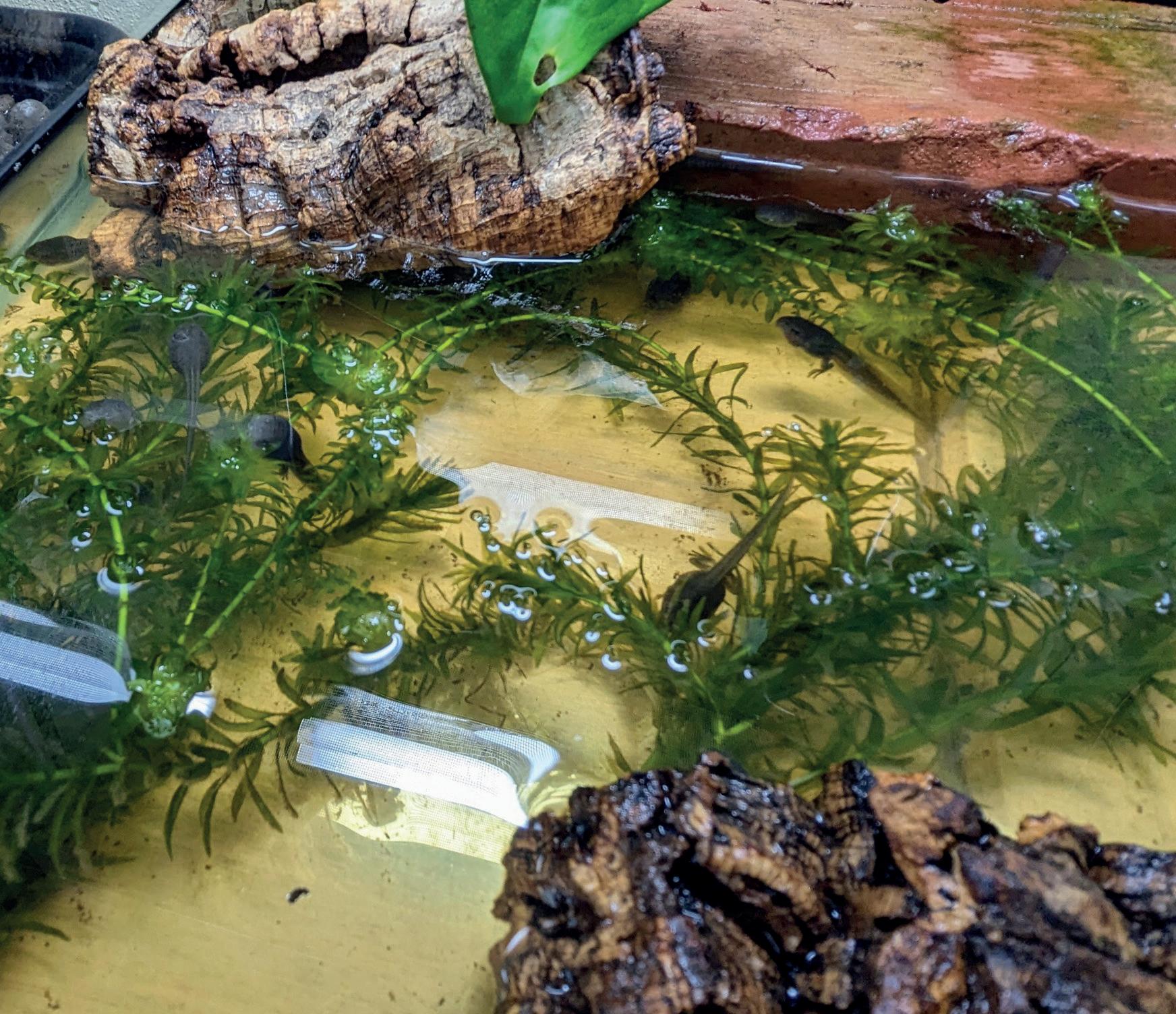
30 SEPTEMBER 2023 It’s a Foam Party
The tadpole rearing enclosure
cucumber, and vegetable flakes, but none of it was taken. It was not until I tried spirulina tablets that sunk to the floor, that I started seeing them feed.
From the size of a bb ball to about the size of the end of your little finger, they grew steadily, and after 3 weeks they began to protrude their rear legs.
At five weeks, their body size started to shrink and front legs began to protrude from the body which now was taking on some green pigmentation. Over the next couple of days, they began absorbing their tails and started leaving the water and climbing up onto the pieces of cork. Their body shape and colour began to appear very much like miniature versions of their parents.

By six weeks, the froglets had absorbed their tails and were ready to start taking live invertebrate food. Considering the adults' ferocious nature to feeding, I decided to start with offering 2nd moult crickets, gut loaded and supplemented. Feeding little and often is always a good bet with younger herps and with these,
one cricket eaten is probably going to be enough to fill their tiny stomachs.
Something else to think about with froglets, that differs from adults, is their tolerance for humidity. Coming from a completely aquatic environment, they need their terrestrial environment to be humid, 80% + to begin with. Live plants, large, shallow water dishes, wet paper towels on the floor and regular sprays all help to achieve this.
The joys of herpetoculture
Keeping this species has given me immense fulfilment and a chance to learn about a species I have never kept before, to hone in on the details of how to help them thrive.
For me, this is what keeping is all about. To keep a few species well, rather than many, whose care is substandard. I can see the “collector mentally” becoming a thing of the past. I personally hope that it does, for the hobby to continue and attitudes towards animal care for the animal’s sake, improves.
31 SEPTEMBER 2023 It’s a Foam Party
An example of a Z. arboreus tadpole.
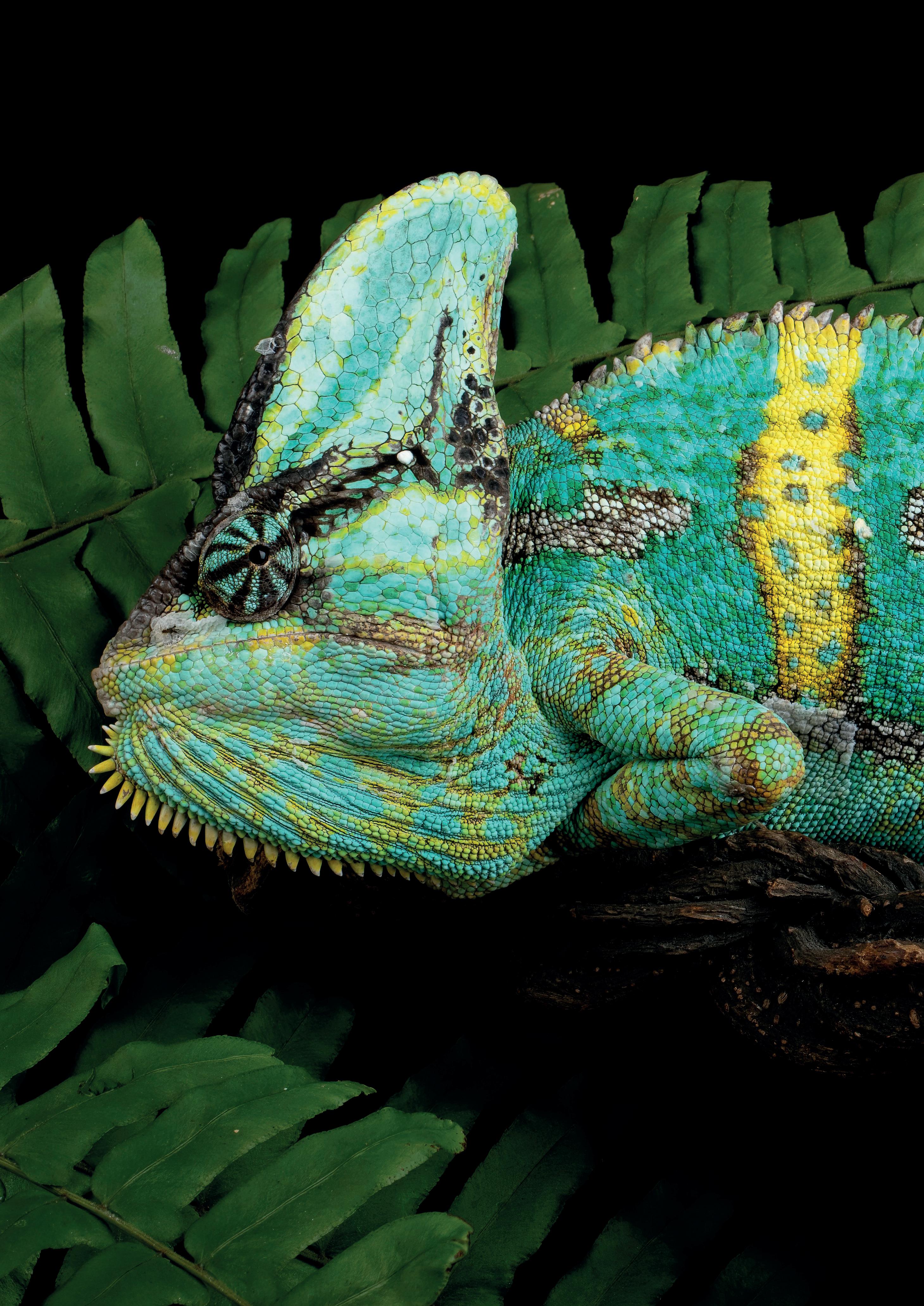 An adult male Yemen or “veiled” chameleon (Chamaeleo calyptratus)
An adult male Yemen or “veiled” chameleon (Chamaeleo calyptratus)
UNVEILING HEALTH CONCERNS IN CHAMELEONS
 By Dr Michaela Betts
By Dr Michaela Betts
The Yemen chameleon (Chamaeleo calyptratus), also known as the Veiled chameleon, is found natively in the southwestern region of the Saudi Arabian peninsula. Unlike other lizard species, chameleons possess a long extendable tongue, rotating eye turrets, and zygodactylous feet. Some chameleon species, including the Yemen, possess “chromatophores” in the skin which allow the colour change that chameleons are famous for. Captive bred individuals are relied upon heavily for the pet trade, but wild-caught and imported chameleons are still found in the United Kingdom. This species can be very rewarding to own, but in the author’s experience are not suitable for beginners as they require very specific care and husbandry in order to thrive. Chronic stress and insufficient setups are sadly very common underlying reasons for disease in captive chameleon species.
In veterinary practice, chameleons often present with an acute deterioration of a chronic underlying condition. Chronic kidney issues, reproductive pathology, and nutritional secondary hyperparathyroidism are common examples of advanced underlying disease processes in the chameleon patient. Clinical signs can be quite vague and non-specific, including dehydration, weak foot and tail grip, darker colouration, and loss of body condition. Secondary issues such as eye conditions, oral and dental lesions, and injuries from prey invertebrates may also be seen as a consequence of a primary underlying disease process. Unfortunately, underlying husbandry deficits are very commonly identified as the likely cause of debilitation. This article will discuss some of the commonly seen health conditions in the Yemen chameleon and how best to try to prevent them.
Nutritional Secondary Hyperparathyroidism
The commonest cause of the well-known “metabolic bone disease” condition, nutritional secondary hyperparathyroidism may be a result of vitamin D3 deficiency, dietary calcium deficiency, and/or imbalance in the calcium-phosphorus ratio. In this species, the condition may present itself as fractures, bending of the leg bones, malformation of the jaw or casque, tremors or seizures, an inability to return the tongue back into the mouth, generalised weakness, paralysis, and difficulties with passing eggs. Ideally it is confirmed with x-ray imaging and with bloodwork to assess ionised calcium levels, phosphorus, and alkaline phosphatase levels.
34 SEPTEMBER 2023 Unveiling Health Concerns in Chameleons
Prevention of this condition requires both the provision of appropriate UV-B lighting and supplementation of food with calcium, and vitamins A and D3. In Yemen chameleons, it is important to know that provision of appropriate UV-B lighting alone is not sufficient to stop the development of nutritional secondary hyperparathyroidism.
Ultraviolet (UV) Lighting
All reptiles, not just chameleons, could be considered “solar powered” in that their lives are governed by heat and solar light (or their artificial equivalent).
About the author: Michaela is an exotic animal veterinarian who graduated from the Royal Veterinary College in 2018. After working in increasingly exotic animal practices and volunteering at a wildlife hospital, she joined Suffolk Exotic Vets in 2021 where she works with an array of avian, reptile, small mammal, amphibian, and aquatic species. Alongside her clinical work, Michaela is an educational speaker for Just Exotics, providing further education to veterinary professionals on exotic animal species, and is involved with the British Veterinary Zoological Society and Association of Exotic Mammal Veterinarians. She is currently completing her RCVS Certificate of Advanced Practitioner in Zoological Medicine.

For Yemen chameleons, who belong in Ferguson Zone 3, ultraviolet light that includes both UV-A and UV-B wavelengths should be provided for 13 hours a day in the summer and 10 hours a day in the winter. The appropriate UV index range for this species is 1.0-2.6.
Chameleons can visualise UV-A light and so it is theorised that this may be important for appropriate communication, basking site selection, and selection of food. The UV-B is important for synthesis of vitamin D and consequently their ability to
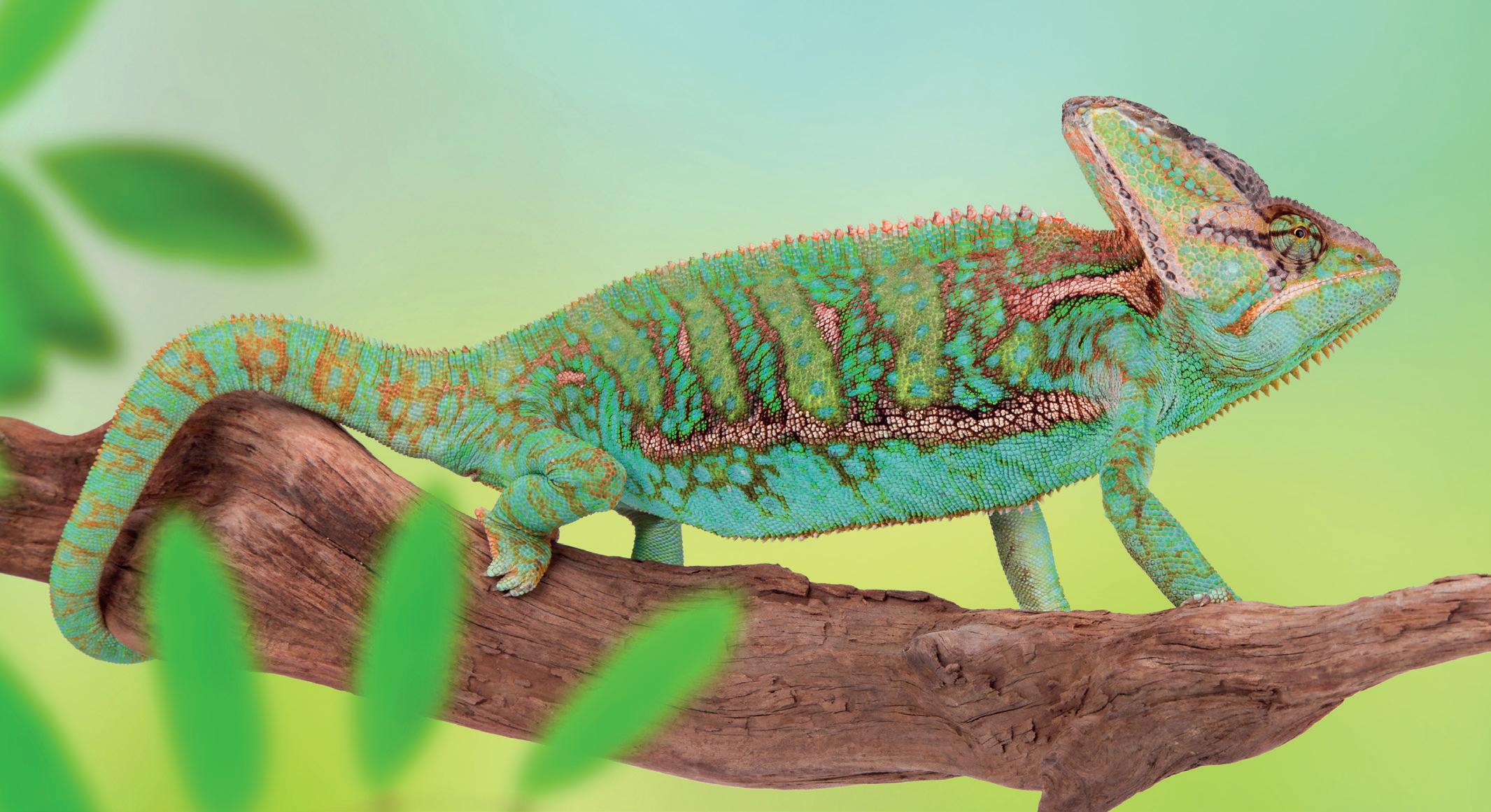
regulate their calcium levels. The UV-B converts chemicals in the outer layers of the skin into previtamin D3 which then undergoes temperature-sensitive isomerisation to produce vitamin D3 that is then released into the circulation.
When setting up UV lighting for our chameleons, it’s important to remember that glass, Perspex, and mesh between UV light and the reptile will filter out a useful proportion of it. 10% tube bulbs that cover the vertical height of the enclosure are ideal, but exact distance and positioning will depend on the bulb strength and brand.
35 SEPTEMBER 2023
Health Concerns in Chameleons
Unveiling
An adult male Yemen or “veiled” chameleon (Chamaeleo calyptratus)

Pinkies 1g+ | Pinkies 1g+ | Pinkies 1g+ | Large Pinkies 2g+ | 10 Pack Large Pinkies 2g+ | Large Pinkies 2g+ Fuzzies 4g+ | Fuzzies 4g+ | Fuzzies 4g+ | Hoppers 6g+ | Small 10g+ | Small/Medium 15g+ | Medium 19g+ Medium/Large 23g+ | Large 26g+ | Extra Large 30g+ Ex-Breeder 35g+ | Ex-Breeder 40g+ Rat Pups 4g+ | Fuzzies 12g+ | Hoppers Small 20g+ | Weaner Small 30g+ | Weaner Medium 50g+ Weaner Large 70g+ | Small 100g+ | Small/Medium 130g+ | Medium 160g+ | Medium/Large 200g+ | Large 250g+ Extra Large 300g+ | Jumbo 350g+ 5 pack | Ex-Breeder 400g+ | Ex-Breeder 450g | Ex-Breeder 500g
Diet and Supplementation
Chameleons are predominantly insectivores and should be offered a variety of appropriately-sized invertebrates such as locusts and crickets. Mealworms can have an inappropriate protein content and should only be offered in moderation, whilst waxworms should only be offered as an occasional treat. Feeder insects should always be gut-loaded prior to being offered to your chameleon so they have appropriate nutritional and fluid value. They can be fed retinol rich diets prior to being used as a food source to help improve its vitamin A nutritional value. High quality gut-loading diets are available on the market, whilst offering dark leafy greens and a calcium content supplement with at least 8% calcium in the dry matter may also be appropriate.
Hatchlings and juveniles should be fed daily whilst adults may be fed every other day. Insects should be dusted with a high calcium balancer with little or no phosphorous content immediately before being offered to the chameleon. If not eaten within 30 minutes they should be removed to minimise risk of deterioration of their nutritional value and of trauma to the chameleon from bites. Once or twice weekly, a supplement containing vitamins A and D should be used to dust the insects. Chameleons can learn to feed from a bowl placed high up within their enclosure, but foraging should be encouraged over this to help maintain activity levels and normal feeding behaviours.
Edible live plants such as hibiscus, philodendron, ficus, and dark leafy vegetables may be included but are rarely consumed.
A study published in 2010 found that Yemen chameleons who received no dietary supplementation of calcium, vitamin A, and vitamin D3 developed nutritional metabolic bone disease. The same study found that whilst Yemen chameleons could utilise vitamin D3 from either UV-B radiation or dietary supplementation,
those without nutritional supplementation developed skeletal deformities consistent with nutritional secondary hyperparathyroidism.
Reproductive Disorders
Follicular stasis, egg-binding, dystocia, and prolapse of the hemipenes are reproductive conditions often seen in Yemen chameleon patients. Even if housed alone and away from other chameleons, their reproductive system is still active and can develop problems.

Males of this species can be clearly differentiated from females due to the presence of a tarsal spur on their back foot that is present from hatching, as well as a thicker tail base and larger casque. They have two testicles which produce sperm that are located near to their kidneys, and two hemipenes found just inside the vent. Only one hemipene is used at a time for mating, where it engorges with blood and will project out of the vent. Local trauma, inflammation, and/or infection, however, can cause the hemipene to become prolapsed and trapped outside of the body. This in turn increases the risk of trauma or development of infection to the organ. In both Yemen and Panther chameleons, vitamin A deficiency has been associated with hemipene prolapse due to impaction of the hemipene pockets from changes to the cells of the lining.
In an emergency situation, the prolapse should be kept lubricated with water-soluble lubricant and veterinary attention immediately sought to identify the prolapse and try to return it into the pocket. However, if the tissue is devitalised then amputation may be required. Fortunately in this species urination occurs independently of the hemipene and so only reproductive function is compromised by amputation.
Female chameleons, on the other hand, have two ovaries which produce follicles that then either develop into eggs or are resorbed. They can produce eggs without mating,
37 SEPTEMBER 2023
Chameleons have “turret” eyes that can move in independent directions.
Unveiling Health Concerns in Chameleons

and the lack of male presence at the appropriate stage of the reproductive cycle has been suggested as a possible contributing factor to reproductive problems, as well as no seasonal changes, stress, inappropriate diet, and a lack of appropriate laying site. It is also important to remember that an appropriate photoperiod and the ability to appropriately thermoregulate are crucial in reducing stress in this species.
In terms of oviposition, females require a deep substrate for egg-laying. This should be provided in a retained receptacle such as a plant pot in order to allow for stable
these signs are similar to the changes seen in a heavily gravid female. X-ray and ultrasound imagine are key to identify and differentiate eggs and follicles, and if follicles appear normal or retained. Unwell patients will often need surgical interventions to remove the ovaries and oviducts and may need additional supportive care, and/or antibiotics if infection is present. This treatment means the female can no longer reproduce but is the only treatment option at present for affected females. Hormonal treatment with deslorelin has been trialled, but does not appear to suppress reproductive activity in this species.
tunnel formation, consistent humidity and temperatures around the eggs, and to avoid accidental disruption of plants within the set-up when removing the eggs. Eggs tend to be laid 21-30 days after mating but retained sperm can result in subsequent clutches being laid with 90-120 day intervals. The captive female can lay 3-4 clutches a year but this is a very high level of productivity and can have a negative debilitating impact for the individual.
Follicular stasis is a condition where the follicles develop but then do not resorb nor develop into an egg with a shell. These undeveloped eggs than remain inside of the body instead and over time cause inflammation, and risk rupturing and causing widespread infection. The condition usually presents as inappetence, a “bloated” appearance to the coelom, and lethargy. However,
Egg-binding, on the other hand, describes the retention of eggs beyond the normal gestation length. Dystocia describes the failure to lay fully-formed eggs. Dystocia may be obstructive in nature due to oversized or abnormally-shaped eggs, abnormal pelvis structure, coelomic masses, or narrowing of the oviduct. It may be non-obstructive in nature due to dehydration, lack of appropriate nesting site, hypocalcaemia, obesity, poor muscle tone, infection of the reproductive tract, the presence or absence of a male at the correct times in the reproductive cycle, and inability to thermoregulate properly. For either condition, retained eggs risk causing local inflammation or rupturing. Similar to follicular stasis, prevention focuses on appropriate husbandry. Surgery may be indicated in these cases that are obstructive, or do not respond to supportive care and changes.
38 SEPTEMBER 2023
Males in the Reproductive Cycle
Yemen chameleons are naturally seasonal breeders but will breed all year round in captivity. Colour changes to a lighter green with blue spots over the back in females is associated with them being receptive to a male. When this blue colouration is noted, females can be introduced into the cage of a male, who should then approach the female and initiation copulation several times throughout the day. If unsuccessful, a female may be reintroduced 4-7 days after the initial attempt. It is recommended that the chameleons are not kept together for longer than 8 hours at a time to reduce the risk of aggression. 1-24 hours post-mating, a female may darken to brown and develop orange markings when a male approaches and this typically signifies that she is no longer receptive. Gravid females will also typically bask for longer periods of time than normal, with some positioning themselves differently to maximise heat exposure to their underside.

Artificial Seasonal Variation
Mimicry of natural seasonal variation may help to stimulate normal reproductive cycles in chameleon species. This can be achieved through providing cooler ambient temperatures during the winter months, as well as the already-mentioned reduced photoperiod of 10 hours UV light daily.
It is worth noting that chameleons that are too cold will appear dark, remain under available heat sources, and can become lethargic and develop inappetence.
Chronic Kidney Issues
According to one study, chronic kidney disease was reported to be one of the most common causes of death in captive chameleon species. Clinical signs can be very vague and include lethargy, weakness, weight loss, inappetence, and dehydration. However, in some cases impaired kidney function leads to excessive levels of uric acid in the bloodstream and cause gout to develop. This presents as accumulation of the uric acid crystals in the joints or around abdominal organs that can show as joint swelling. Vitamin A deficiency, chronic dehydration, chronic bacterial infection, toxicity, and excessive vitamin D supplementation have all been suggested as potential contributing factors to the development of kidney issues.
in Chameleons
Unveiling Health Concerns
Hydration & Humidity
Chameleons do not tend to drink from standing water and instead prefer to drink droplets from leaves or décor. Due to this, chronic dehydration is a common debilitating factor in many disease processes, not just a contributor to chronic kidney disease. Similarly, humidity is crucial for optimising chameleon health and needs to be consistently managed throughout the day.

A combination of automatic misters or foggers, over-head drip systems, waterfalls, and manual spraying every 4-6 hours may all be used to help both maintain appropriate humidity and to provide plenty of preferential drinking sources. Their humidity should be maintained between 50-75% and regularly monitored with a hygrometer.
Temperature
Constant opportunities for daytime basking are typically provided for this species by a lamp either within the enclosure with a guard around it, or above a mesh ceiling. These should be positioned to provide the appropriate basking temperature at the highest branch to mimic how it would be in nature. Chameleons may favour a lateral basking position, and so all branches must be securely fixed under basking sites to provide stable support.
Ambient daytime temperatures for this species should have a range of 22-26C and a basking spot of 28-33C, with
an overnight temperature of 20-25C. Using two thermometers at both the hot and cool ends of the enclosure as a minimum is recommended. Ambient temperature is usually best achieved through heating of the room, whilst use of ceramic heat lamps and heat mats externally (never underneath) can provide focal sources of heat particularly for overnight. All heat sources should be thermostatically controlled, and use of minimum-maximum thermometers for measurement can ensure temperatures are not getting too far out of range without the keeper realising. Chameleons who are kept at excessively high temperatures may demonstrate oral gaping, excessive activity levels, or a light colouration.
Enclosures
Appropriate enclosure design is important to reduce stress, which can cause immunosuppression and lead to develop of disease.
The preferred set-up for chameleon species is either a tall glass vivarium with appropriate ventilation or a mesh screened enclosure. The minimum recommended size is 60cmx60cmx90cm for a single animal but the larger the better as this provides not only more stimulation for the animal, but also increases the number of microhabitats and microclimates within their set-up. Any adjacent enclosures should be separated by solid visual barriers but without compromising
ventilation. Wooden vivaria are not recommended for this species due to the high humidity needed to keep chameleons appropriately. The wood is porous which predisposes to fungal and bacteria growth over time, and these vivaria are not as well ventilated.
This species is arboreal and so require lots of vertical and horizontal space with multiple branches to climb and areas to take shelter amongst for visual security such as live or artificial leaves.
Substrates should allow maintenance of the appropriate humidity and plant growth if desired. Coconut coir is commonly used. Gravel and bark chips are best avoided as these have a risk of becoming adherent to the tongue during inaccurate feeding attempts and carry a risk of trauma to the tongue or mouth, or causing an obstruction.
Conclusion
Appropriate diet, humidity, temperature, artificial seasonal variation, ultraviolet lighting, and enclosure design are all vitally important in helping to prevent or reduce the risk of developing disease. Prophylactic neutering may be of benefit for females given the high incidence of reproductive disease, but this is an area that needs further study. An annual physical examination with an experienced reptile vet can help to identify issues early as reptiles do not tend to show signs of illness until they are already in a disease process.
40 SEPTEMBER 2023
100% NATURAL PEST CONTROL
TAURRUS® is a living organism (predatory mite) that is a natural enemy of the snake mite (Ophionyssus natricis).








TAURRUS® mite predators are very small, measuring less than 1mm as adults. They are able to live for several weeks and reproduce in the areas where they find their prey. Despite its small size, the TAURRUS® predator acts aggressively and is able to attack and kill preys 3 to 4 times larger than itself.
Once released, the microscopic predators will actively seek and consume parasites. Once eliminated, the predators disappear naturally. The mode of action requires several days. After introduction of TAURRUS®, pest populations should be monitored: at first it will stabilize, and then gradually decline. In heavy infestations, several releases may be needed to eradicate all parasites.

SEPTEMBER 2023 41
A SHORT AND SNAPPY HEADLINE
Breeding dwarf crocodiles in captivity.


At less than two meters in length, the African dwarf crocodile (Osteolaemus tetraspis) is the smallest true species of crocodile in the world. This ancient reptile can be found in tropical and subSaharan West Africa from Senegal to Uganda. They are highly cryptic, rarely leaving the water of the remote swamps they occupy. However, the expert Zookeepers at Crocodiles of the World in Brize Norton, UK have managed to captive breed these cryptic crocs for over 14 years, learning much about their natural history in the process.
Osteolaemus
There are two species of “dwarf” crocodiles (not to be confused with the dwarf caimans of South America that belong to the Alligatoridae family), O. tetraspis and O. osborni. The former is more widely distributed, whereas the latter is found only in the Congo Basin.
Adult males will rarely exceed 1.8 - 2m in length; females tend to be around 1.5 – 1.6m in total length. The colouration is dark: grey or black. As with all crocodilians, the eye colour tends to blend with head colour for camouflage, so these guys have dark brown, almost black, eye colour as well.
The body is robust, compact in this species, and heavily
armoured. The rear feet have reduced webbing than in larger crocodilian species. The head and jaws are stocky and powerful, with a crushing bite designed for their prey of freshwater crustaceans, small animals, frogs, fish, crabs etc.
Colin Stevenson, Head of Education at Crocodiles of the World told Exotics Keeper Magazine: “In the swamps and wetlands of the West African home for this species, small pools, streams and lagoons are preferred over broader and deeper water bodies. Many of these will be in almost closed-canopy forests, so the water is dark – ideal for this cryptic species. Much has been made of some populations that have found a relatively undisturbed habitat within cave systems, but this is not the normal habitat for the species.
44 SEPTEMBER 2023 A Short and Snappy Headline
Crocodilians are adaptable, though, and as long as there is water, an ability to thermoregulate and food available, they can cope.”
“In captivity, we try to mimic this to an extent. As a zoo we design enclosures to suit the species first of all, then to permit safe and suitable access for keeping staff, and thirdly we factor in visitors – who have paid to see some animals! So, our Osteolaemus enclosure is intentionally less brightly-lit, and we feature branches and leaves that extend out over part of the enclosure. We house African cichlids in the pool as well. There are darker, more secluded sections within the pool and on the land area so that the crocodiles can feel more secure – a taste of what they’d experience in the wild!”
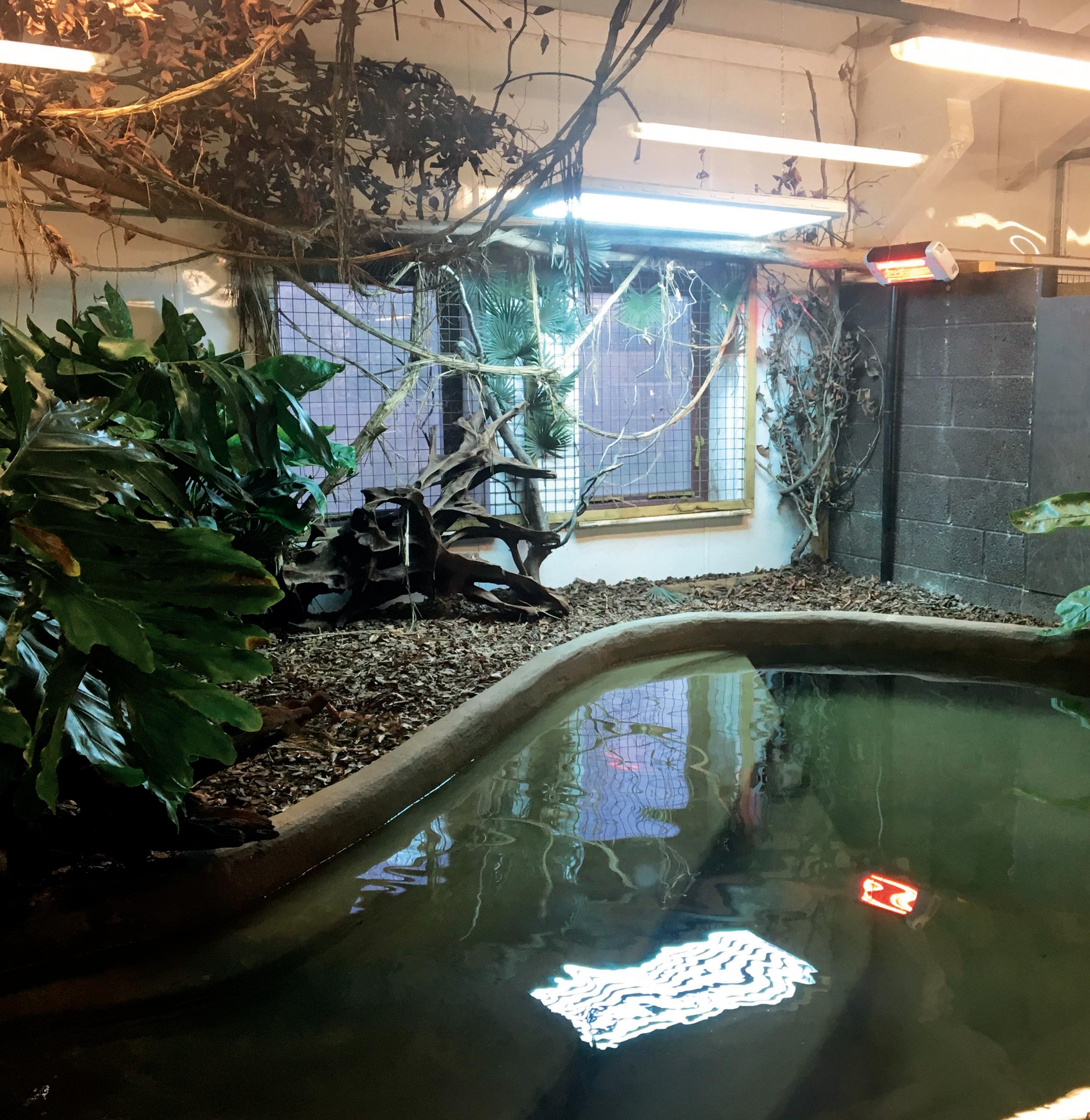
A
Conservation
The African dwarf crocodile is considered Vulnerable by the IUCN, although it was last assessed in the 1990s. Therefore, the species could be in a far more perilous position today as agricultural and infrastructural development has continued throughout Africa’s equatorial countries.
Colin continued: “Like most animals that are threatened to any extent these days, loss of habitat or quality of habitat is a major factor. In parts of their range, Dwarf crocodiles are also prime targets for the bush meat trade. Their small size makes it relatively easy for them to be caught alive and then carried to the bush markets to be slaughtered. Overfishing in many areas can reduce prey species, but these crocodiles remain quite widespread. Because threats
45 SEPTEMBER 2023
Short and Snappy Headline
The African dwarf crocodile enclosure at Crocodiles of the World
HIGH QUALITY HAUTE QUALITÉ SHINYBLACK CABINE T















250 / 370 / 570 / 720 L

With over 50 years of service to reef aquariums, it is the pleasure of AQUARIUM S YSTEMS t o share the level of passion we have had since the beginning: L’AQUARIUM 2.0.












With L’AQUARIUM, you can start a reef system quite simply and w ithout any stress regardless of your l evel of expertise. Let us guide you, and welcome to the world of L’AQUARIUM 2.0.


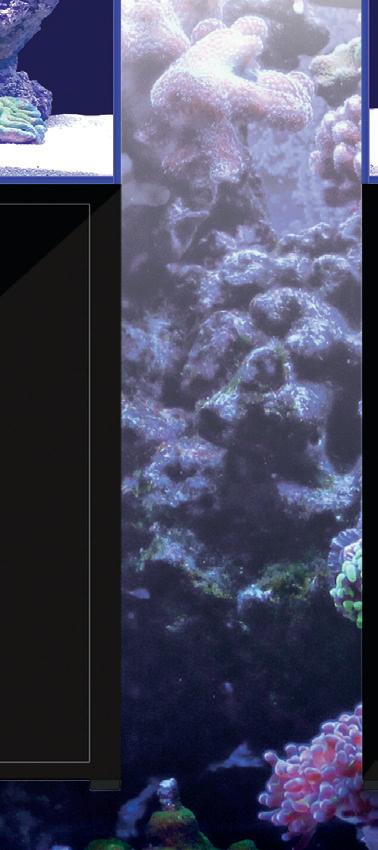

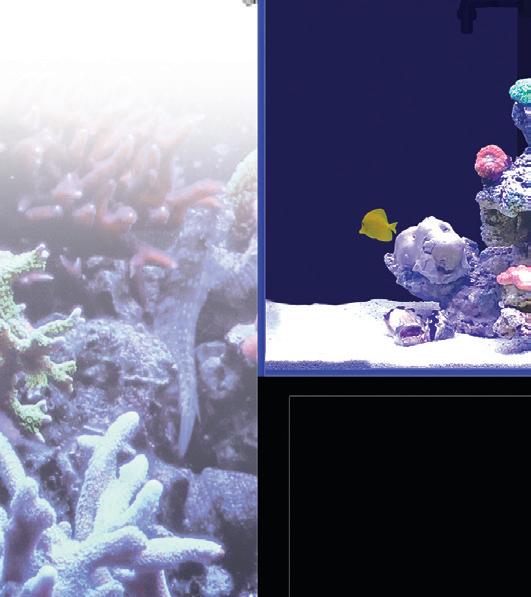





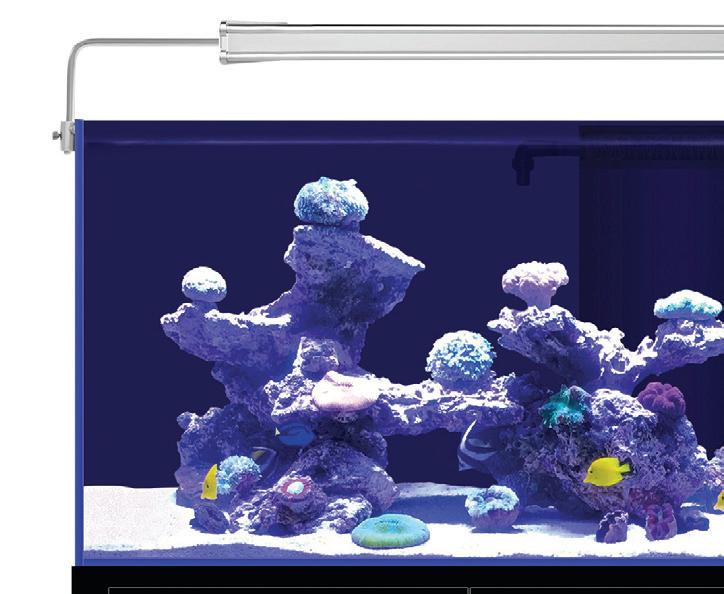
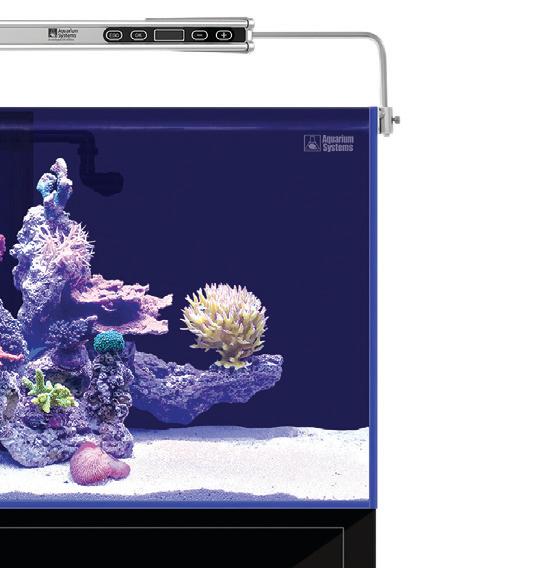


ADJUSTABLEFEET
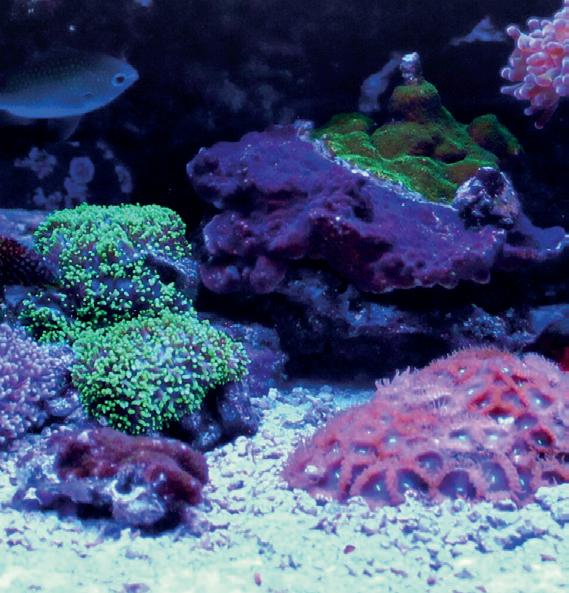
SEPTEMBER 2023 250
370 570 720
to the wild populations remain, the species is listed as Vulnerable. Over the coming years, as the dwarf crocodile complex of species or subspecies is redefined taxonomically, it’ll be interesting to see how the various populations are assessed regarding conservation status.”
Species and speciation
Because Osteolaemus are so adaptable, there have been some rather miraculous stories of specific populations inhabiting surprising locations. One specific population of O. tetraspis in Gabon has been recorded living in cave systems almost entirely isolated from other populations. The only access to these underground cave networks is through a 7m deep shaft and yet, the caves supported a healthy population that
differed from the nominate forms. The “cave crocodiles” were typically larger than other members of the species, almost entirely blind and stained orange. It is thought the colouration comes from a chemical attack on the skin. These crocodiles are also a few percent genetically distinct from other crocodiles, suggesting that they have been isolated for thousands of years. Furthermore, rather than predating on crabs, frogs and shrimps like “normal” O. tetraspis, the cave crocodiles eat a diet primarily made up of bats, crickets and a large amount of algae. Although this case may represent a purely miraculous case of adaptability, the huge range of these animals across a poorlystudied and often inaccessible part of the world suggests there could be many more Osteolaemus species or subspecies to describe.
Keepin’ crocs
“The fundamental approach to husbandry for all crocodilians is fairly standard” explains Colin. “For each species, we may tweak the temperature and lighting regimes according to what we consider is ‘normal’ for them in the wild, but again, there is some crossover between species from similar tropical areas.”

The exhibit is around 20 square meters. Two-thirds of the floor space is water and the water depth at its deepest point is around 80cm.
Temperatures within the enclosure fluctuate to replicate tropical climes. These range from nighttime lows of around 26°C to daytime highs of 35°C during the hottest part of the year, with a humidity range of 70-90%. They are also provided with full-spectrum
47 SEPTEMBER 2023
Like their larger relatives, African dwarf crocodiles will open their mouths to cool down.
lighting and specific UVB access, but Colin admits “We don’t expect them to use it as much as, Nile crocodiles (Crocodylus niloticus), for example.”
The basking rig is comprised of a 1.5kw shortwave heater coupled with an 8x 54w T5 Unit that uses 4x 14% tubes, and 4x plant growth tubes. With this basking setup, the keepers can achieve temperatures of 34 - 45°C with a UVI maximum of 2.7. Water temperature will go from 26 - 30°C throughout the year.
The African dwarf crocodiles at “Crocs of the World” co-habit with Malawi cichlids, cuckoo catfish, and long-fin tetra. They are fed once weekly, but this may be reduced slightly in cooler months, depending on the animals’ overall body condition. The team offers a variety of food items such as crayfish, fresh fish, rodents, poultry (mainly chicken or quail), Rabbit, and venison when available, food items will usually be fed whole.
Breeding crocodiles
Breeding crocodilians in captivity can be a difficult process
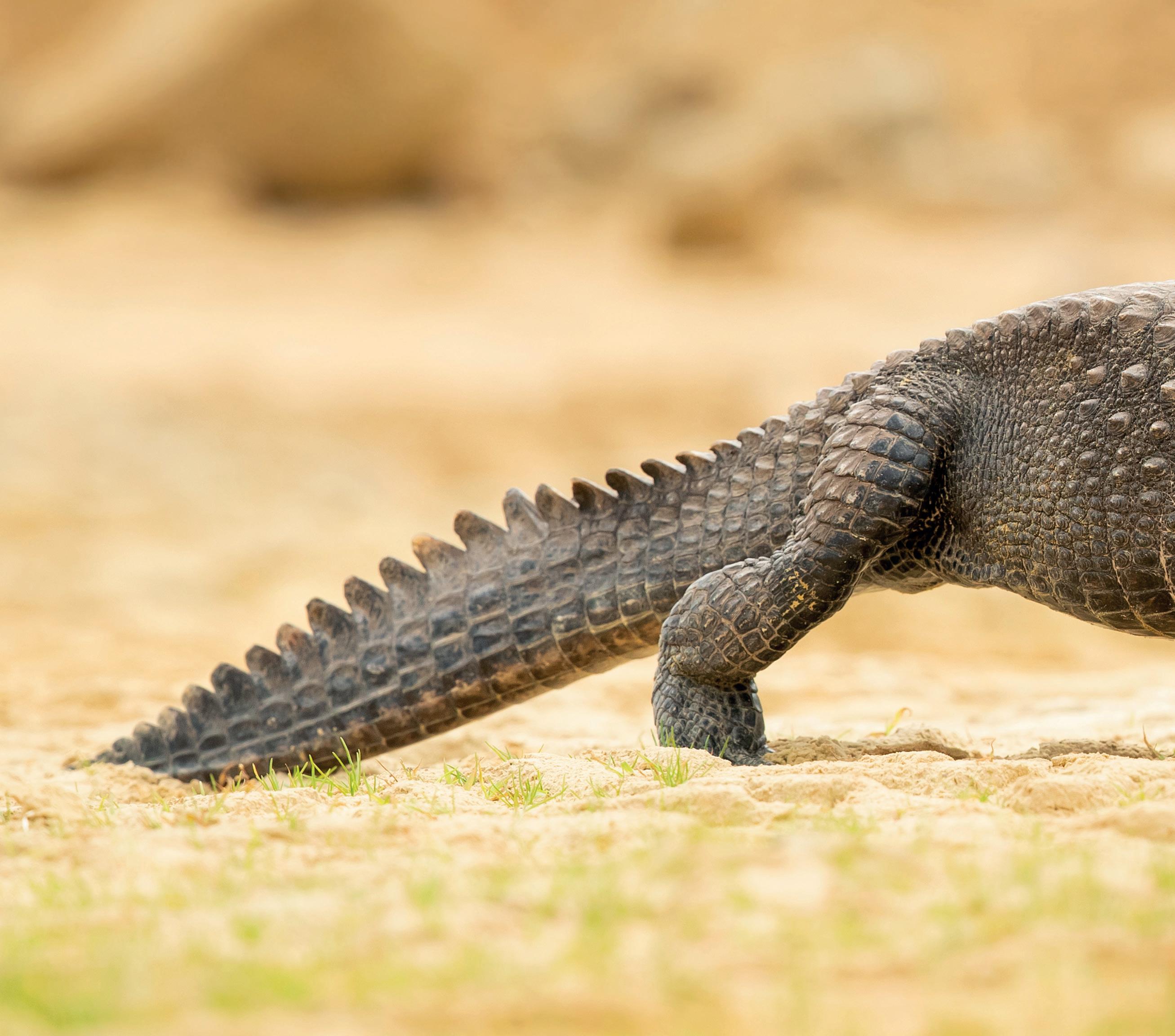
that requires a lot of careful consideration. Not only do most species produce 20+ eggs per clutch, but their large size means that most collections cannot house a vast number of animals and thus the choice when pairing two individuals is limited.
Colin added: “Breeding of the species within European zoos is overseen by studbook keepers who will recommend pairings of animals to maintain high genetic diversity within the European zoo population. They may also recommend certain pairs are specifically not bred due to an excess of crocodiles from the pairing already within the zoo community. Exchanges between European and American zoos will sometimes be considered, just to introduce ‘new blood’ into both communities.”
For the past 6 years, Crocodiles of the World have been donating all Osteolaemus eggs to an ongoing project with researchers at the Natural History Museum/Imperial College. This is because zoos rarely require 20+ new juveniles that hatch with every clutch. “The other important point is that with crocodilians, there is temperaturedependent sex determination (TSD)” Colin added. “This
48 SEPTEMBER 2023
African dwarf crocodiles will occasionally leave the water, despite being predominantly aquatic.
simply means that it is the temperature at which the egg develops that will determine whether the young are males or females. We can therefore incubate for males or females by setting the temperature within our incubators accordingly.”
A zoo might need some young crocodiles for use in an education program, or in the case of Crocodiles of the World, have requests from other zoos for certain species or certain sexes of these species (another zoo may, for example, want some male crocs to pair up with some females that they already have). Crocodiles of the World can therefore look at incubating eggs of certain species depending on their own needs and those of other zoos within the region.
Colin continued: “What we don’t want is to be left with a large number of growing crocodiles – and they live for 50+ years! To continue breeding each year and hatching more and more crocodilians without plans in place would be highly irresponsible! Similarly, any young crocodilians we hatch out for use in our education programs will need to have a plan for when they outgrow these education programs.”
The incubation process
Crocodilians have long been bred in captivity and understanding the science of incubation is something that professionals have refined over many years to now achieve extremely high success rates. Clare Wilkie, Researcher at Crocodiles of the World told Exotics Keeper Magazine: “We generally choose to artificially incubate crocodilian eggs so we can closely monitor them to ensure they keep within an appropriate temperature and humidity range throughout the incubation period but they can certainly be incubated in a more ‘natural’ setup within their nests too.”
The African dwarf crocodiles at Crocs of the World maintain a nest site year-round, but it is reported that the actual nesting typically begins in Spring, with egg-laying to follow in early Summer. This process usually spans April through June. Artificial incubation lasts around 85 days, but “natural” incubation also follows a similar pattern, as the keepers at Crocs of the World discovered in XXX.
“Expectant females are highly adept at detecting the most suitable temperature zones for nesting” added Clare. “However, in zoos, the choice of nest site will always be

49 SEPTEMBER 2023
somewhat limited to the available parameters of the given environment. A few years ago, a clutch of eggs was left to incubate within the nest of our female Osteolaemus and some of those eggs did hatch successfully. Jolie, the mother did very well in demonstrating that strong maternal care that crocodilians are well known for, assisting the hatchlings from the nest to the pool and continuing to display protective instincts as they grew.”
“Currently at Crocodiles of the World, when we plan to re-introduce hatchlings into the parents’ exhibit, we’ll remove the clutch of eggs but leave the nest in place. This allows the female to continue her nest-guarding instincts and when we pop the hatchlings back in, those parental impulses naturally kick in. This method allows us to reach those optimal incubation conditions and gives us the added benefit of monitoring the hatchlings for a few weeks to make sure they are healthy and strong before introduction.”
Crocodilians as pets
Crocodilians are fascinating animals that, to some, make enticing pets. Although not “commonly kept” in the UK, some species of crocodilians will occasionally become available. The Exotics Keeper survey, which has only
captured a small percentage of keepers and kept animals, has documented three different crocodilian species kept in the UK. The most popular of which, are those that are dubbed “dwarf” crocodiles.

Clare concluded: “The ‘dwarf’ status of some species of crocodilians can understandably give the public perception that these animals will remain small throughout their lives, and therefore somewhat easier to manage. However, some dwarf caiman, such as the Schneider’s dwarf caiman, can occasionally exceed two metres in length!”
“Two metres of any species of croc is a powerful animal that can do substantial damage if handled inappropriately. Anyone that has worked with the ‘smaller’ croc and caiman species will likely believe that they are some of the more assertive and boisterous of the crocodilians… certainly with the biggest attitudes!”
“When the misconception that dwarf species remain small is paired with the resilient reputation of crocodiles, this can in a few rare cases, see crocodilians receive less-thanoptimal care. However, it should be recognised that some private keepers demonstrate exceptional standards of crocodilian care that should be strived towards!”
50 SEPTEMBER 2023
A juvenile African dwarf crocodile with its mother.
KEEPER BASICS: NEXT-LEVEL KEEPING

Animal husbandry is a complex science that demands the replication of a wild environment, whilst also providing amicable conditions for a single animal to survive in. Nature is vast, unpredictable and dangerous and it is the keeper’s responsibility to add aspects of this unpredictability to an otherwise tried-and-tested formula to reach the highest standards of enrichment. We have compiled a list of techniques used by zoos and experienced keepers to help the average reptile or amphibian keeper reach the “next level”.
Seasonality (live food and conditions)
Does it rain in the desert? Yes. Are there droughts in the tropics? Yes. Whilst it is the keeper’s responsibility to protect their animals from potentially life-threatening extremes, a life of neutrality is neither natural nor enriching for the animals being kept. However, pushing environmental limits is something that must be done with extreme care and consideration. Once the keeper feels they have “perfected” the basic care requirements of their animals, it is important to research their wild counterparts. One excellent example is that wild bearded dragons,
when not eating vegetation, will eat more termites than any other insect. Yet, the thought of feeding something as small as a bean weevil or a fruit fly to an adult dragon may send shivers down most pet owners’ spines. Equally, wild leopard geckos consume mostly fatty, moisturerich, caterpillars (particularly through the rainy season). Of course, both examples would be in very different quantities to a “regular” feeding routine in captivity, but our idea of “natural behaviours” are sometimes completely out of reach by animals that are exposed to a standardised care sheet routine.
52 SEPTEMBER 2023 Next-Level Keeping
iNaturalist for plant selection
iNaturalist is a great tool that is used by biologists and zookeepers alike. Whilst the records on the platform may not be perfect and are only breaking the very tip of the iceberg in its goal to document the flora and fauna of Planet Earth, iNaturalist can be utilised by keepers in their husbandry practices. For anyone who is not familiar with the website, it is a geographical map that allows naturalists to upload photographs of flora and fauna that they have seen and tag the location. The records are then verified by other users to help produce more detailed distribution maps. For example, the IUCN may list that a particular species is found across the entire eastern half of a country, but iNaturalist has found that it only occurs around specific rivers and waterways in that region.
iNaturalist has several uses that are becoming more popular amongst keepers. Firstly, the keeper can locate
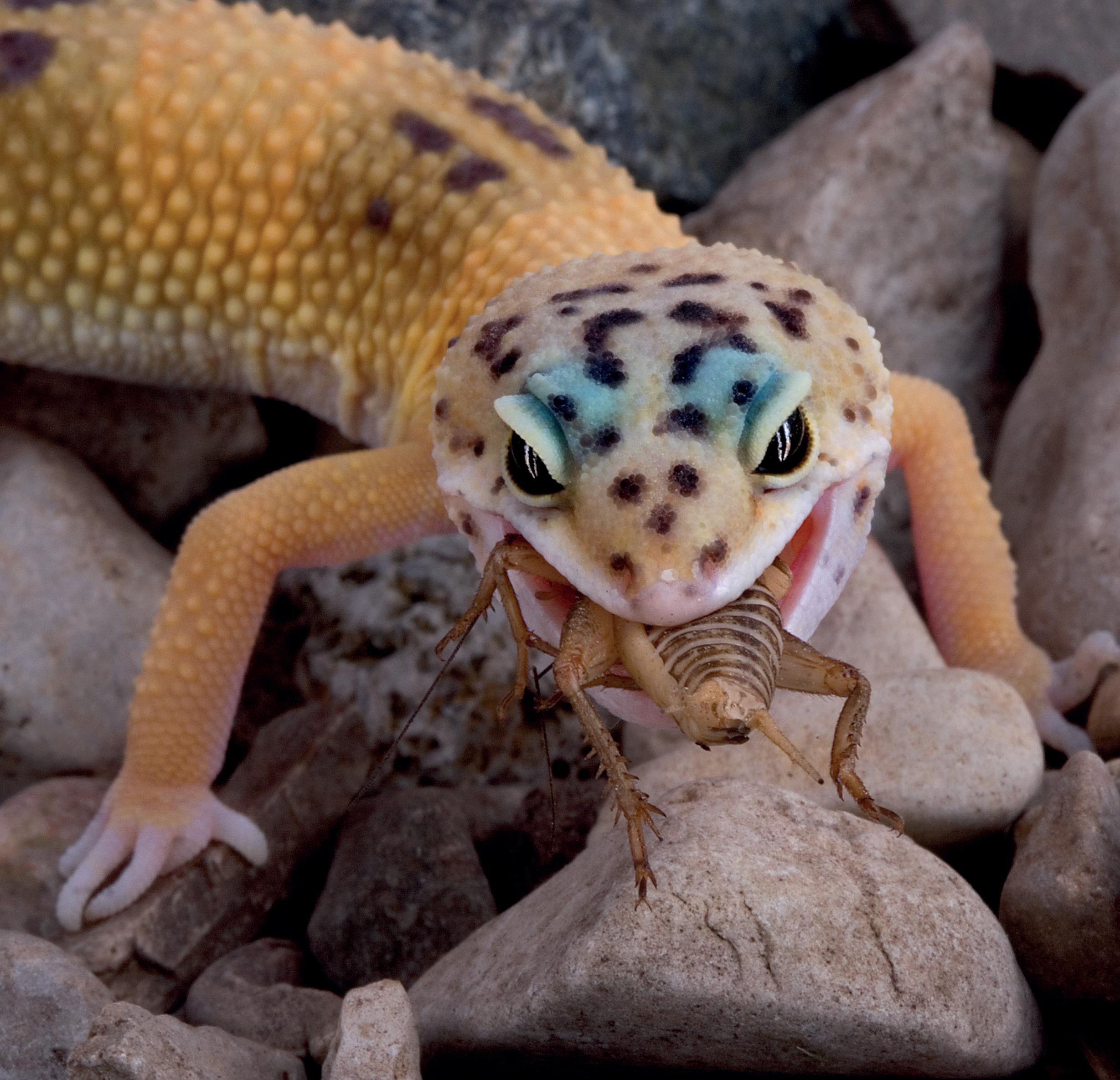
the exact region their animal comes from to get specific environmental readings. For example, the “average” temperature in Colombia will be much hotter in the Amazon than it will be in the cloud forests of the Lower Andes. Furthermore, the coastal regions will experience extremely different weather to inland environments and so on. If the keeper can locate a thriving wild population, they can tweak their animals’ environment to match those experienced in the wild.
Secondly, the keeper can also use iNaturalist to locate sympatric species. Now, with a whole plethora of Bromeliads and other tropical plants being imported into the UK every week, the choice is outstanding. It may take a little time and work, but by using iNaturalist to scroll through the plants found in the exact same spot as a wild population of the animal that is kept, the keeper may create an almost-perfect planted terrarium.
53 SEPTEMBER 2023
A leopard gecko (Eublepharis macularius) feeds on a brown house cricket.
Varied diet
We’ve said it before, but we’ll say it again: a varied diet is perhaps the easiest ticket towards high standards of animal welfare. For carnivorous species, try experimenting with different-sized rodents, chicks (chicken and quail), fish, etc. Keepers of other species may also feed naturally deceased snakes, frogs and lizards with caution. Use different scent trails and feeding methods and try to maintain a sporadic feeding routine. It is very easy to fall into a pattern of “on this day, these snakes receive this rodent”, especially when the keeper has a large collection, but there are so many opportunities to vary that diet.
Insectivorous species are far easier to cater to. There’s a whole plethora of live food species available today. If your local reptile shop simply does not stock obscure species such as snails, calci-worms, dubia roaches and silkworms, try sourcing them elsewhere. Whilst not all shops will have a wide array of live food offerings, sticking to a single size of crickets or locust for the entirety of the animal’s life is not fulfilling or healthy. Some species will also enjoy scrambled eggs mixed with berries, insects or a protein source. Many invertebrate keepers will also maintain a collection of easy-to-breed, geographically sound inverts to feed to their animals. For example, tree monitors love to eat some of the large, commonly-available stick insect species.
Keepers can also experiment with feeding insects at different points in their lifecycle. Locusts will grow drastically over time, adding some variety to a meal.
Calci-worms eventually turn into reasonably robust flies that lizards love to chase. Even fruit fly larvae can offer a high-fat treat to a small frog before it hatches into a fly.
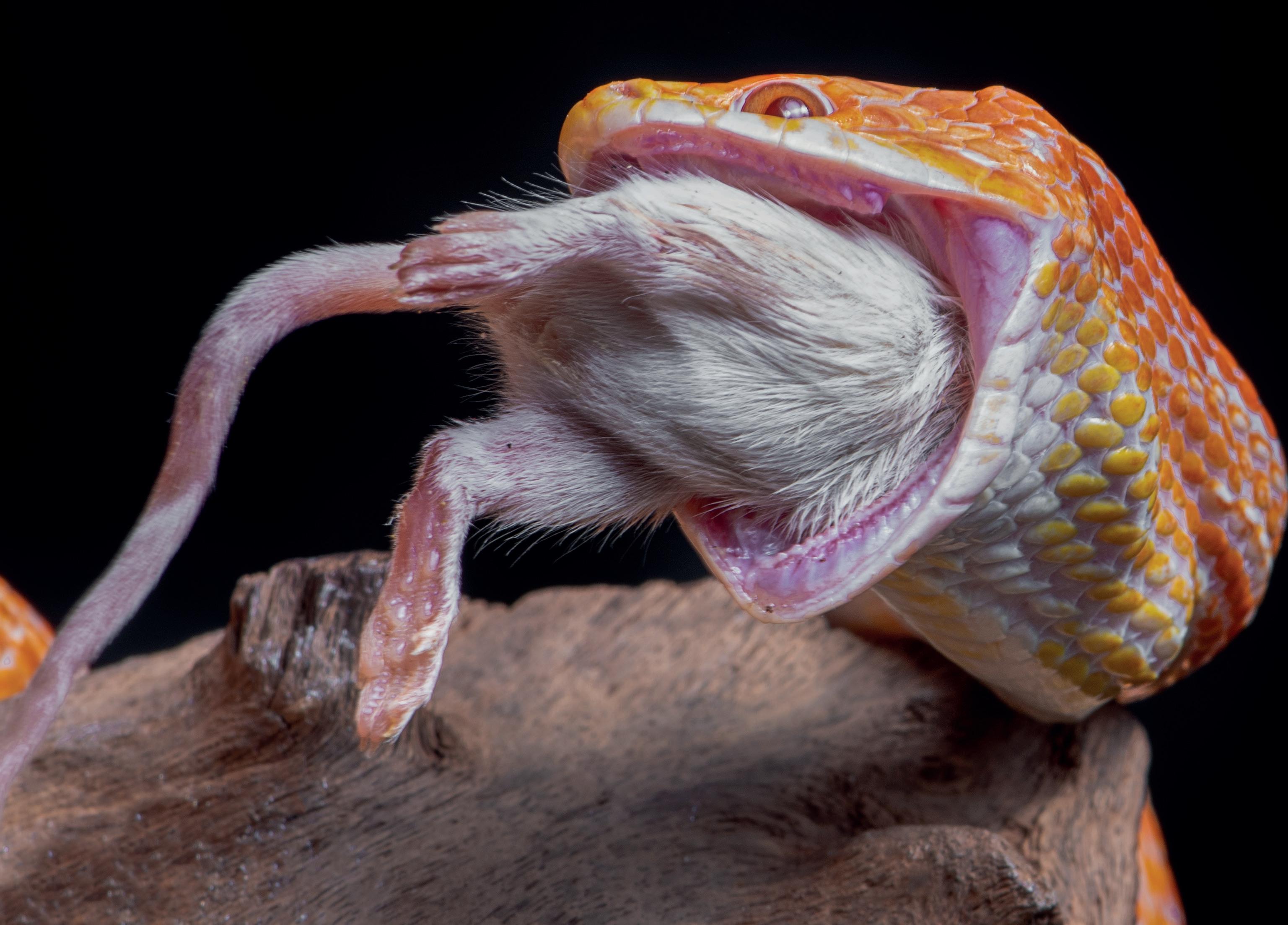
Larger terrariums
Perhaps the easiest way to take husbandry practices to the next level is to increase the available space to do it in. It sounds simple, but a larger terrarium means more gradients, more enrichment opportunities, a larger hunting arena, a greater spectrum of plants and, in some cases, the option to co-habit animals. Small species such as poison frogs or anoles can benefit from having established territories within the enclosure, prompting mating behaviours and friendly disputes without endangering the individuals. Larger species, both arboreal and terrestrial, will also benefit from having access to multiple gradients and hides. We all know leopard geckos need a “cool” side and a “warm” side, with at least one hide positioned in the “cool” side that acts as a humid retreat. However, with more space, it’s possible to offer a cool hide, a humid hide, a cryptic basking hide that the animal can wedge itself into and different substrates to add new textures and humidity retention properties across the environment. These are all quite basic things, but they are only able to be implemented if the keeper has a large enough terrarium to work with.
Whilst there will always be controversy around what constitutes an “appropriate” sized enclosure, the more space the keeper has to play with, the easier it is to make use of that space.
54 SEPTEMBER 2023
A corn snake feeds on a frozen-thawed mouse.










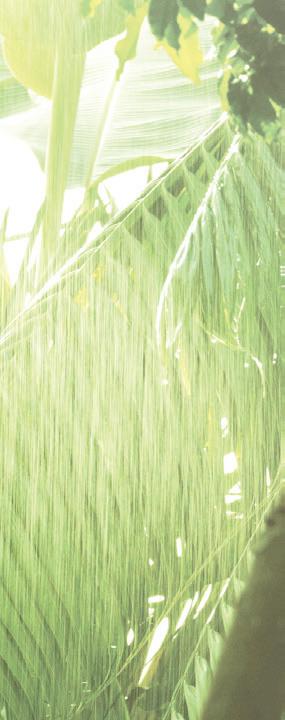



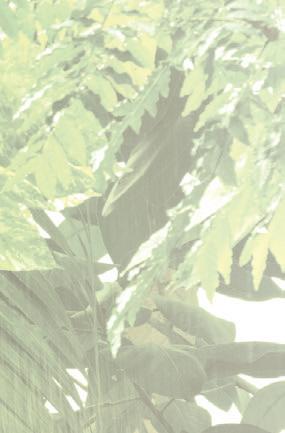



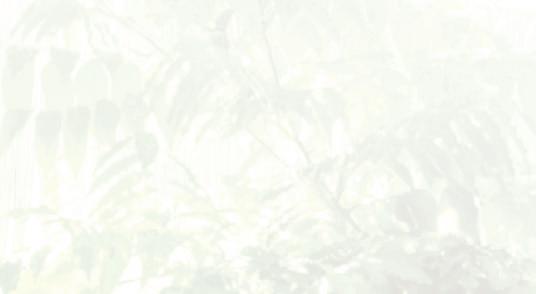
















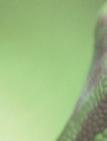
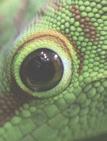

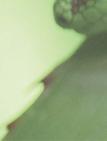

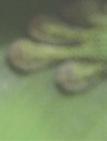


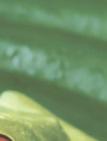
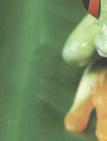
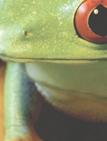


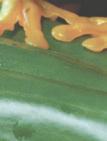










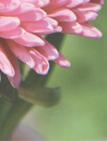









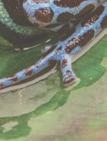



















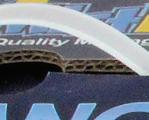
























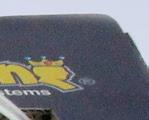

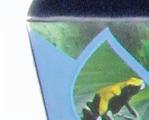


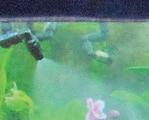


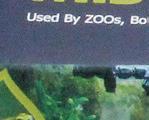

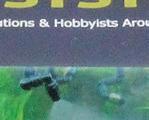


































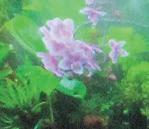


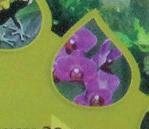




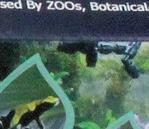

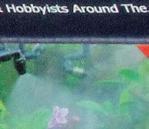





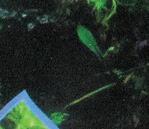

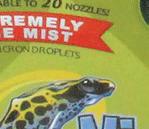

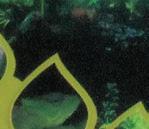

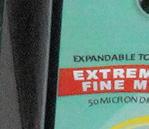
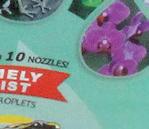
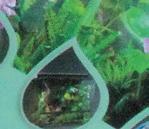
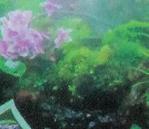
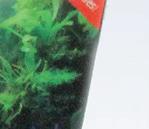

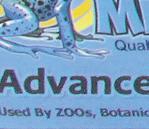




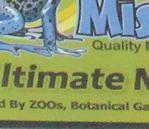


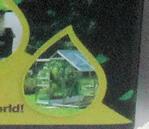
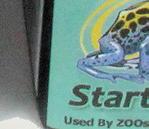

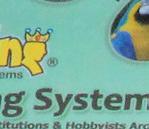







SEPTEMBER 2023
Unobtainable browse and décor
Those that use naturally-planted terraria can use basic horticulture to improve their care and keeping. Zookeepers will often plant fast-growing browse in unreachable areas of an animal’s enclosure so that the food source is only available periodically throughout the year. Not only does this prevent hungry animals from completely demolishing the plant, but it also restricts the consumption of potentially high-sugar food sources. Unobtainable browse is given the chance to grow to its full potential and in some cases flower, or fruit, before it is eaten, giving a varied nutritional profile when the animal can reach it. This method can easily be implemented in a large terrarium or outdoor enclosure by simply adding an edible plant to a raised plant pot. As the plant grows and trails, the animal can browse at its leisure, but will also enact natural behaviours as it understands that the food source is finite and temporary.
This can also be applied to plants that act as décor or shelter. Whilst it is important to make use of all available space when designing a terrarium, strategically positioning fast-growing plants to act as passages to new areas in the environment, can have some excellent benefits. For example, Pothos may act as a ladder to arboreal platforms, or Soleirolia could create a bridge over running water.
Sensory enrichment
Sensory enrichment can be achieved in a variety of ways across different species. For example, scent trails can be added to snake enclosures to encourage exploration and natural hunting techniques. Novel objects can also introduce new smells into an enclosure. Simple things like plastic balls, cardboard tubes and hessian bags are great for snakes, but other reptiles will also investigate a strange-looking object in their home. Even natural-looking objects such as cork bark, rocks and artificial plants can offer something exciting when used temporarily. Hunting for insects becomes more challenging and demands more physical exertion if the enclosure is filled with thick foliage or new branches to scale.
Running water can also be an excellent addition to many terrariums. Building a waterfall is reasonably straightforward with the right planning and Exo-Terra even sells their own “all-in-one” waterfalls that can be placed into the environment. There are a lot of myths around which species require moving water to drink and although there are many species that massively benefit from seeing droplets form, or some movement in their dish, most species will readily drink from a simple water dish. However, moving water (especially water that is run through a filtration system) can be interacted with in a myriad of ways, depending on the species. Turtles will often bathe under waterfalls, frogs may require the water to breed, some lizards will opt to drink from a moving water source and both the keeper and the kept benefit from the tranquil sounds of running water.
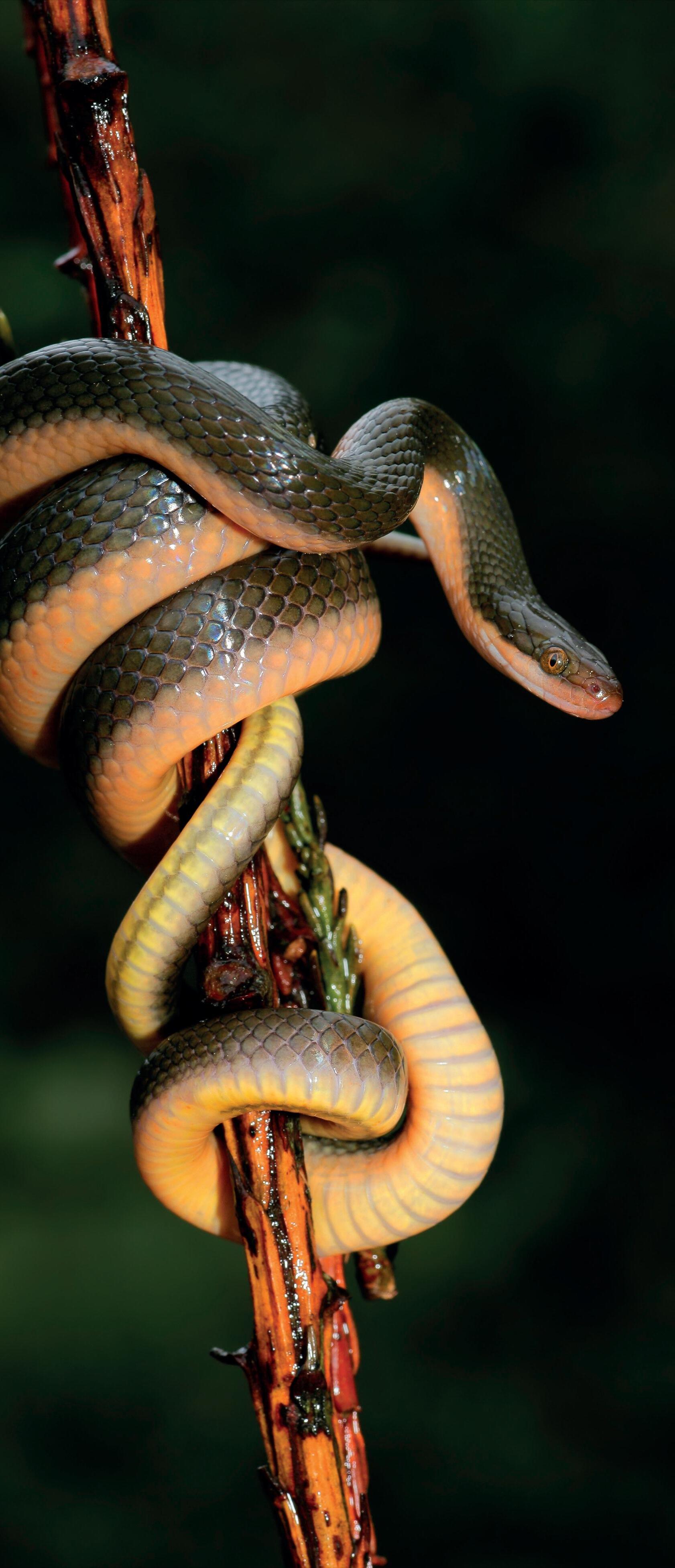
56 SEPTEMBER 2023
Next-Level Keeping






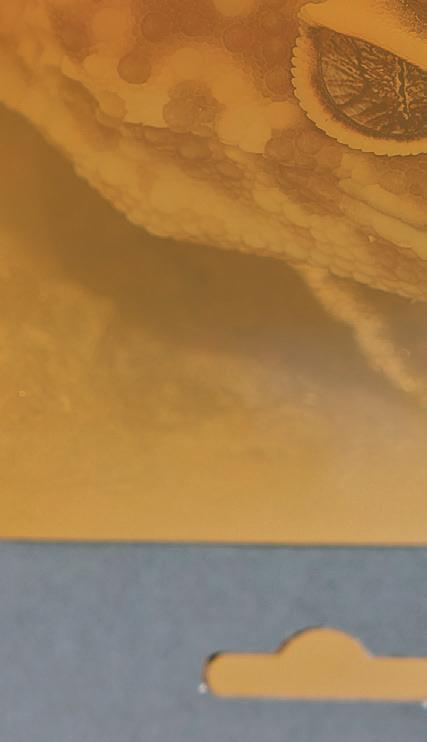

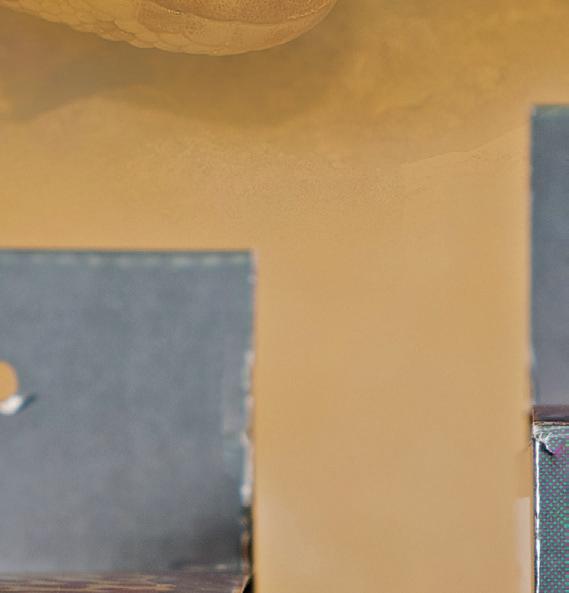

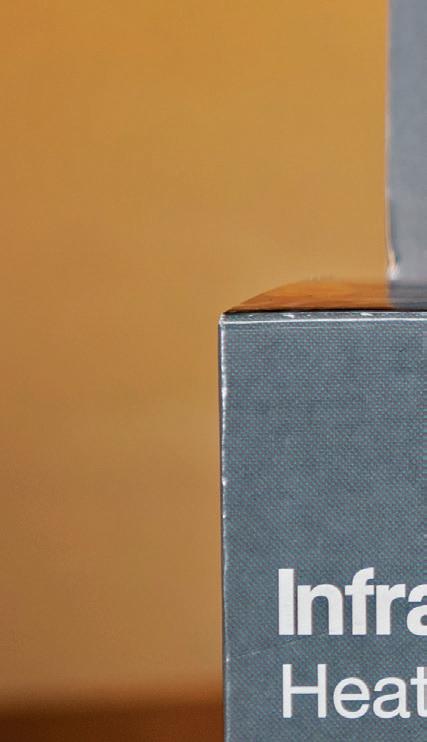

















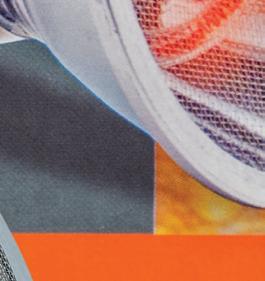
























57 SEPTEMBER 2023 www.pro-rep.co.uk
FASCINATING FACT
Invertebrate diversity
Did you know, 97% of all animals on Earth are invertebrates? So far, around 1.7 million species have been described and that is barely scratching
the surface of the true diversity of these creatures. In fact, “estimates” suggest there could be anywhere from 5 to 30 million invertebrate species and it is expected that it would take over 1,000 years for scientists to describe them all. In fact, this diversity is being lost at a far quicker rate than it is being discovered.

SEPTEMBER 2023 58 Fascinating Fact
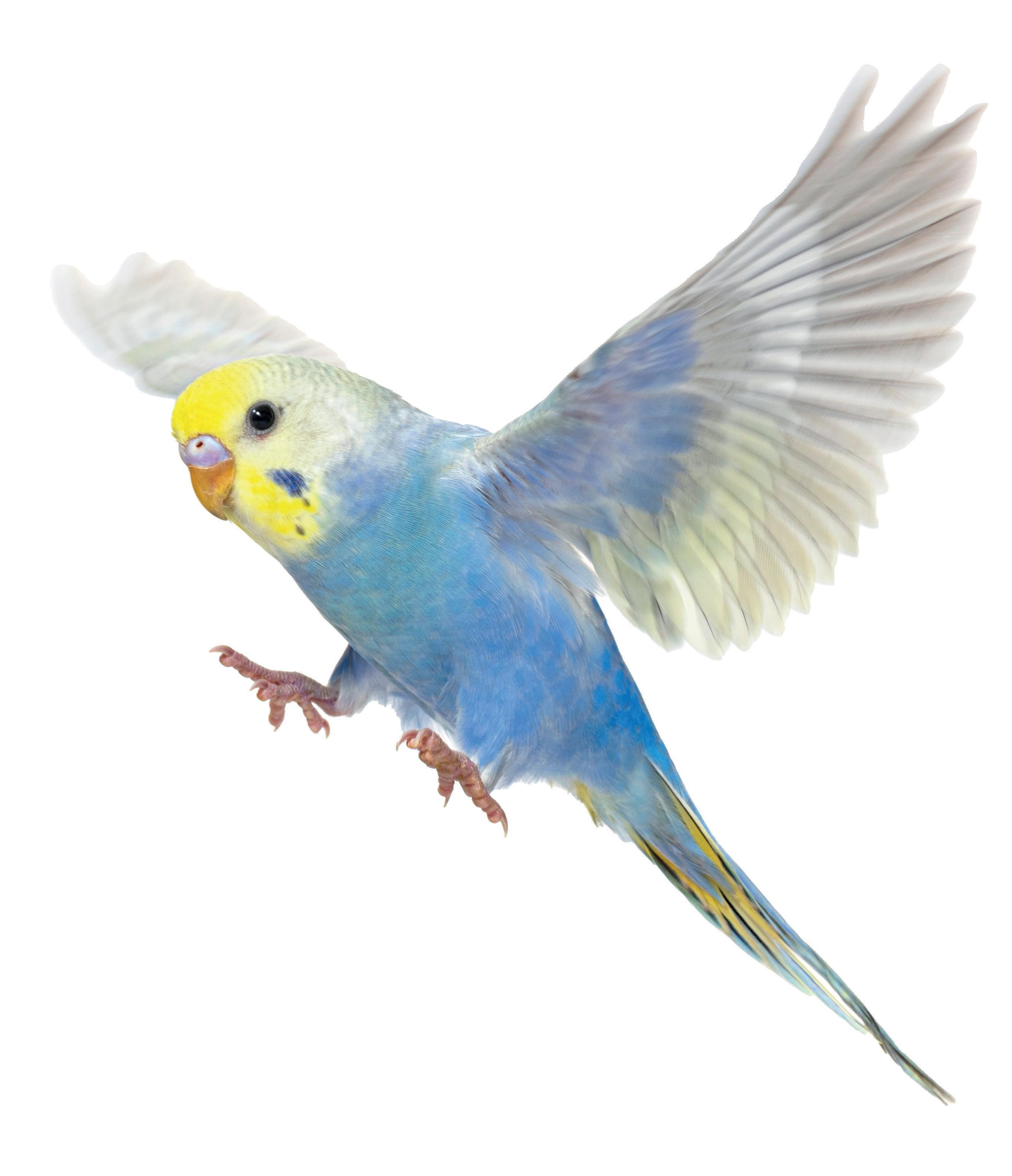

59 SEPTEMBER 2023 Don't wing it without cover... Get an insurance quote! We also offer exotic, dog, cat and horse insurance, as part of the Petcover Group. Contact us at exoticdirect.co.uk or call us on 01444 708850. ExoticDirect is a trading name of Brooks Braithwaite (Sussex) Ltd which is registered in England and Wales under number 1416900. Brooks Braithwaite (Sussex) Ltd is authorised and regulated by the Financial Conduct Authority under reference number 304839.







































































































































































































































 By Gary Miller
A Japanese flying frog (Zhangixalus arboreus)
By Gary Miller
A Japanese flying frog (Zhangixalus arboreus)










































































 An adult male Yemen or “veiled” chameleon (Chamaeleo calyptratus)
An adult male Yemen or “veiled” chameleon (Chamaeleo calyptratus)
 By Dr Michaela Betts
By Dr Michaela Betts










































































































































































































































































































































